40 common home repairs you can fix yourself
The ultimate list of home repairs and maintenance jobs that you can tackle yourself in a hurry. From draft-proofing windows to sorting out that flickering bulb, plumbing emergencies and more. Toolbelt at the ready…

Camille Dubuis-Welch
Whether you own your own place or rent an apartment, it's only natural that the odd home repair will arise. The frequency and urgency of these issues will of course depend on whether your home is brand new or with a little more history. Either way, it's all too easy to pick up the phone and call a plumber, electrician or other type of tradesperson when actually some of the most common home repairs can easily be remedied DIY.
You know the score, a cupboard door will feel a little loose but you'll put it off and next thing you know it's dangling by a thread, which is not only inconvenient but also fairly hazardous to your household. But there are more common repairs that shouldn't be left alone also, and that you can more than likely resolve yourself.
Most common home repairs
From unclogging a toilet to fixing a creaky door or drafty window, there are a million and one things that can go wrong in a house.
Thomas Goodman, a UK-based property expert from MyJobQuote says that one of the most common home repairs that should be treated as a priority is mold and damp since it can have a direct impact on your home's value if left for an extended period, 'As it’s one of the first things you need to repair and keep an eye on, damp which isn’t resolved can make a house unsellable. This is because health issues for the occupier can arise. Damp problems are ignored as it can be a costly job, it can range from condensation, damp from poor plumbing and chemical damp. The problem will cost more long-term if it’s ignored.'
Experts at Duck® brand say, 'From a weatherization perspective, the most common repairs are done to block drafts and air leaks coming from gaps in windows and doors that lead to high heating bills during cold winter months.'
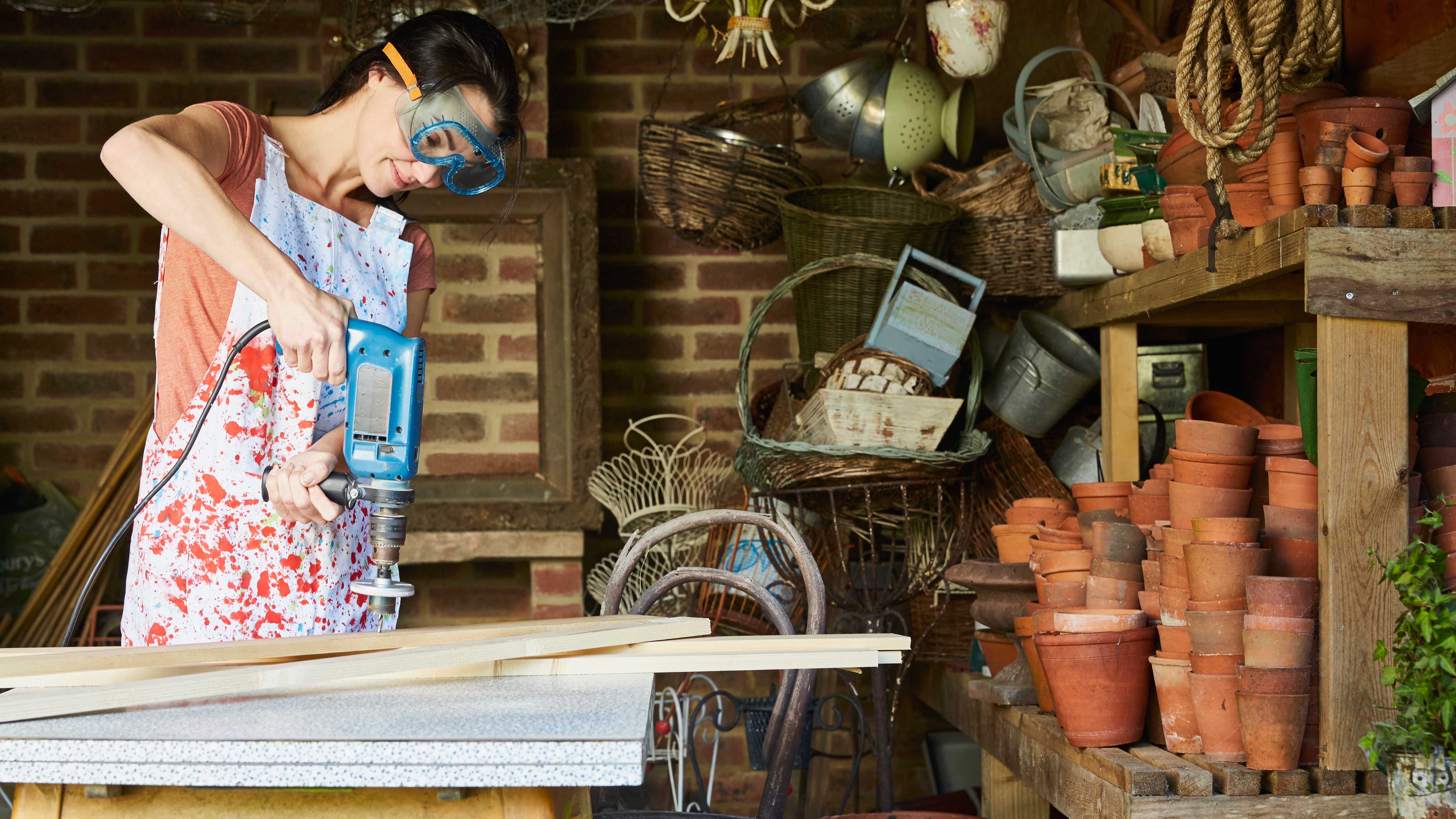
General home repairs tool list
From silencing creaks to repairing failed fixings, these jobs will take next to no time to complete. You can do a substantial amount of fixing and mending with just a few tools:
- Set of screwdrivers
- A claw hammer (useful for pulling nails out as well as knocking them in)
- A multi-purpose medium-toothed saw
- Steel measuring ruler
- Spirit level
- Pliers
- An adjustable spanner
- A nail set (for driving nail heads just below the surface)
- Craft knife.
- One of the best drills will be invaluable.
1. Seal drafty windows and doors
Air escaping in or out of windows or door gaps isn't ideal for you or your budget. Cut down on the chill, not to mention your heating bills, by better sealing them, especially in the winter months. As recommended by the experts at the Duck Brand that specializes in weatherization, checking window seals is a must: 'Windows can be a huge area to drain your home of warmth if gone unchecked. If there’s a draft or cooler space near your windows, check for air leaks by examining areas around the seal of the windowpanes, as well as the latch on any windows that open. Leaks can be tested with an incense stick, so you can visualize the source of the problem. A thin stream of smoke or fog directed toward any part of the area being tested makes it easy to spot.' Sort out drafty windows and your home will be far snugger in no time.
Get small space home decor ideas, celeb inspiration, DIY tips and more, straight to your inbox!
And, if cool air leaks in from around door gaps in the frame, consider a draft stopper as a quick fix, totally worth the investment.
2. Unclog a dishwasher that is not draining
A dishwasher that isn't draining will not be doing its job correctly and it will no doubt be interrupting your cleaning routine. Thankfully, there are a few failsafe methods you can try to unclog a dishwasher quickly to get it working as it should. You should check the dishwasher filter is free from debris, test the drain and inspect the drain host also to ensure they are all clear.
Should you realize that something is actually jammed in the dishwasher you may need to call in a pro as it will involve disassembling your appliance and putting it back together again.
3. Secure a loose floorboard
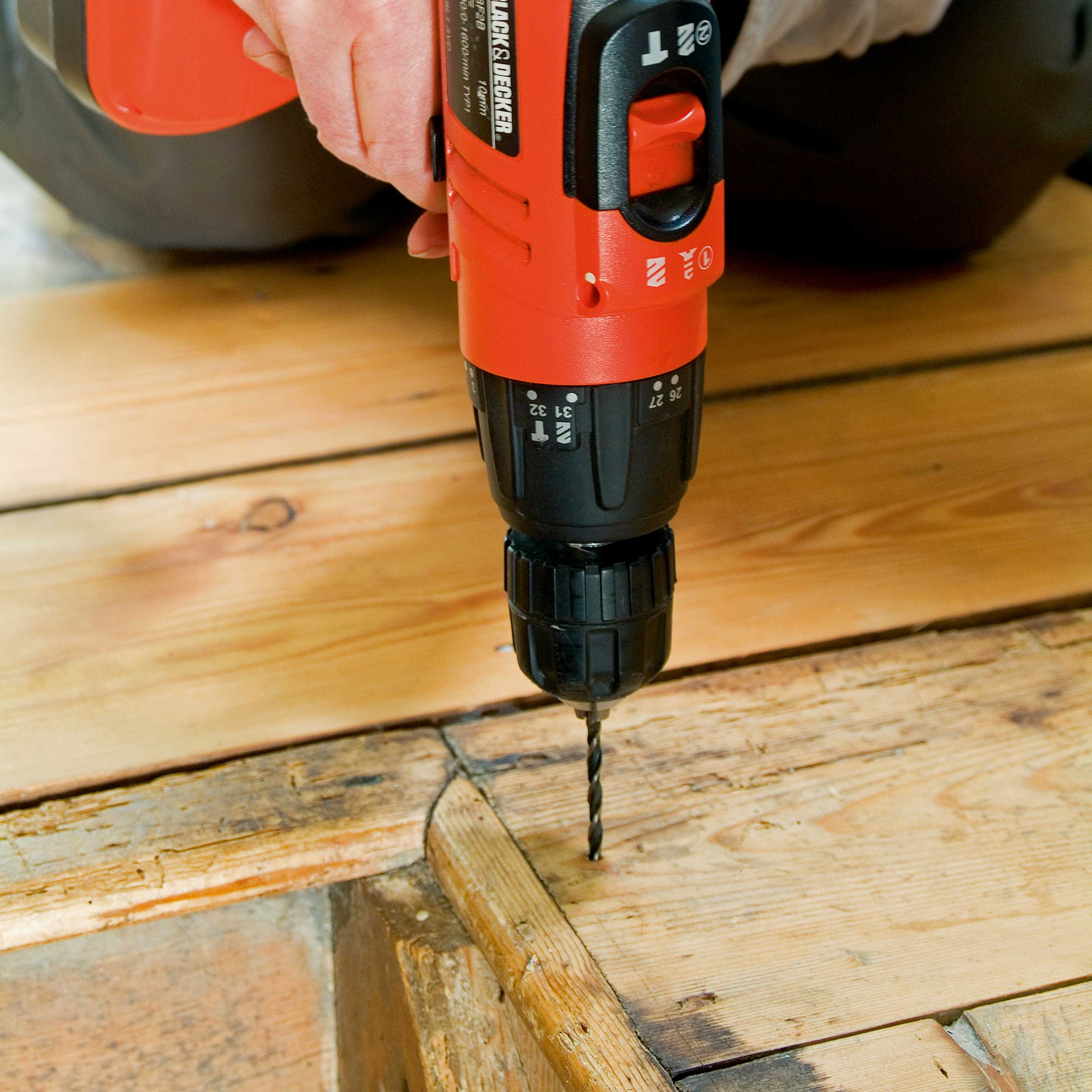
Over time the flexing of floorboards can loosen nails, so try driving them in deeper with a nail set. If the board is bowed, use stainless steel screws instead of nails and cover the heads with wood filler. Moistening the wood will make it easier to screw down. Screwing is also a good way of fixing boards over cables. BEFORE you begin work, always check that there are no pipes or electrical cables directly beneath them – you can only proceed safely when you have done so.
- Find the best power tools for any job.
4. Silence creaking floorboards
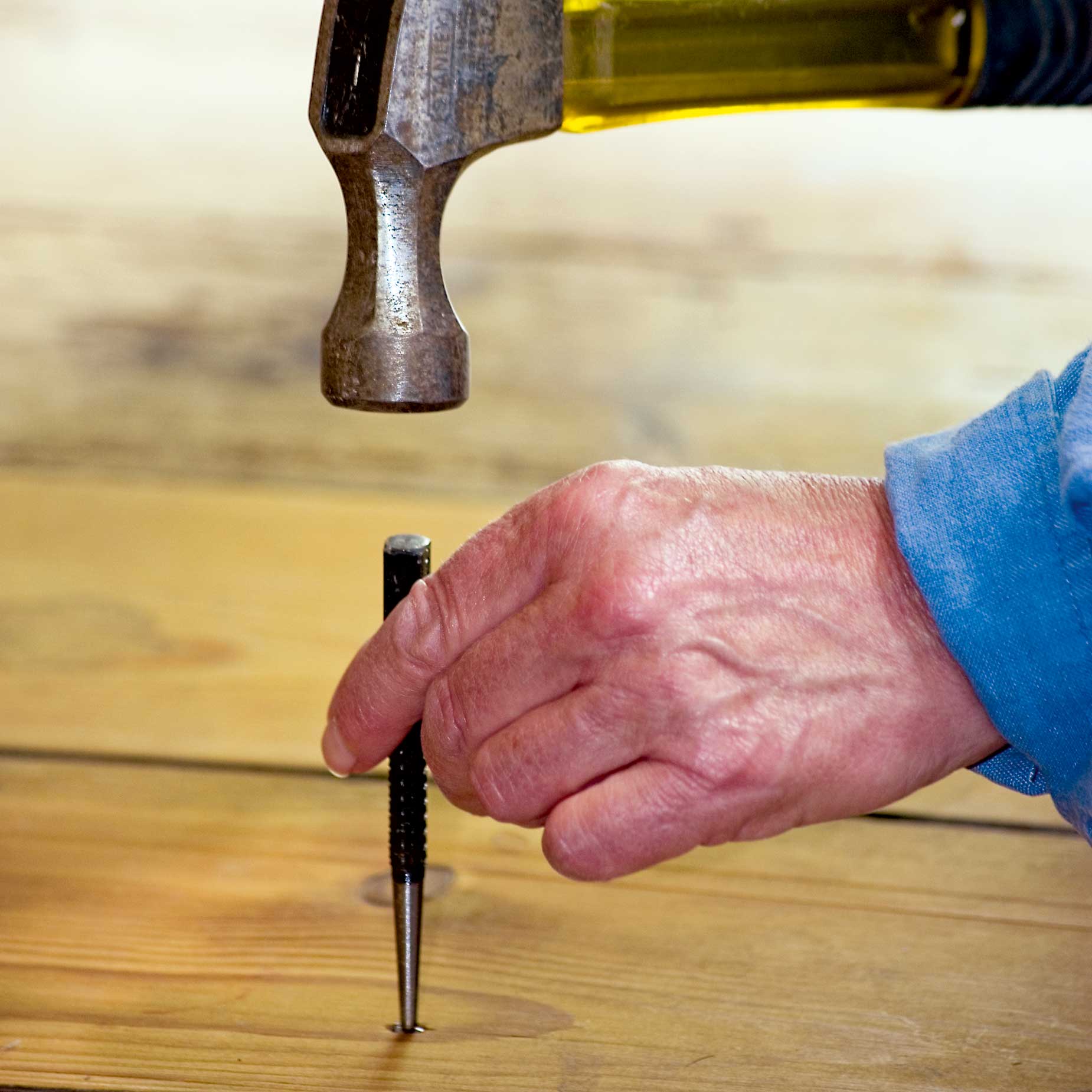
If a board is rubbing against a joist, lubricate it by sprinkling talcum powder around it. Knock down protruding nails that have worked loose and lost their grip.
If constant movement has caused nail heads to wear a hole in the board, put in a couple of screws, using a detector to check for hidden pipes or cables – BEFORE you begin work, always check that there are no pipes or electrical cables directly beneath them – you can only proceed safely when you have done so.
5. Fixing creaky stairs
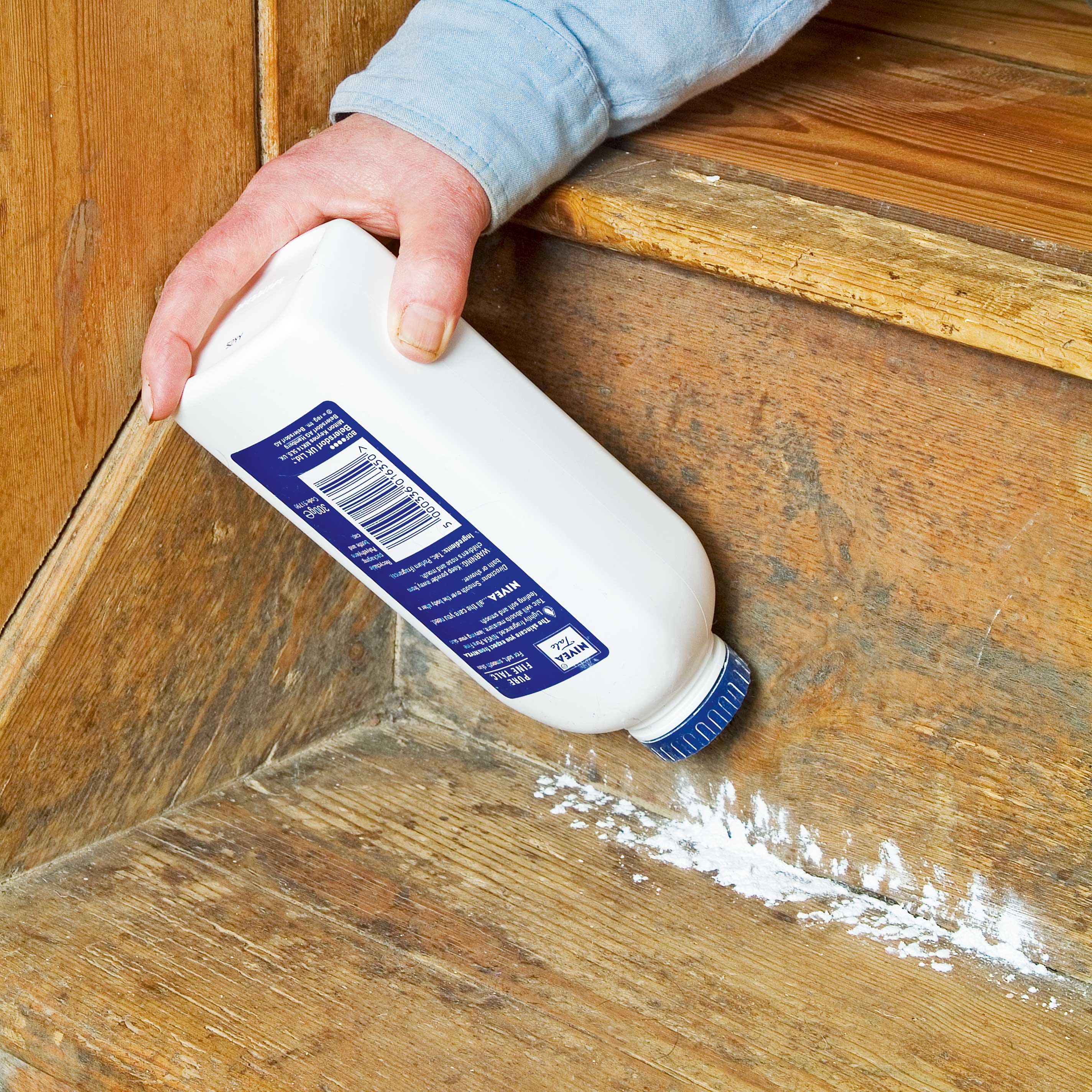
The movement of wood causes joints to loosen and rub against each other. Try sprinkling talcum powder into the joint of the problem step.
If the friction persists, strengthen the joints. Glue blocks will be fitted between the tread and the riser: prise away the blocks, inject wood glue into the joint and refit the blocks.
6. Replace a failed wall fixing
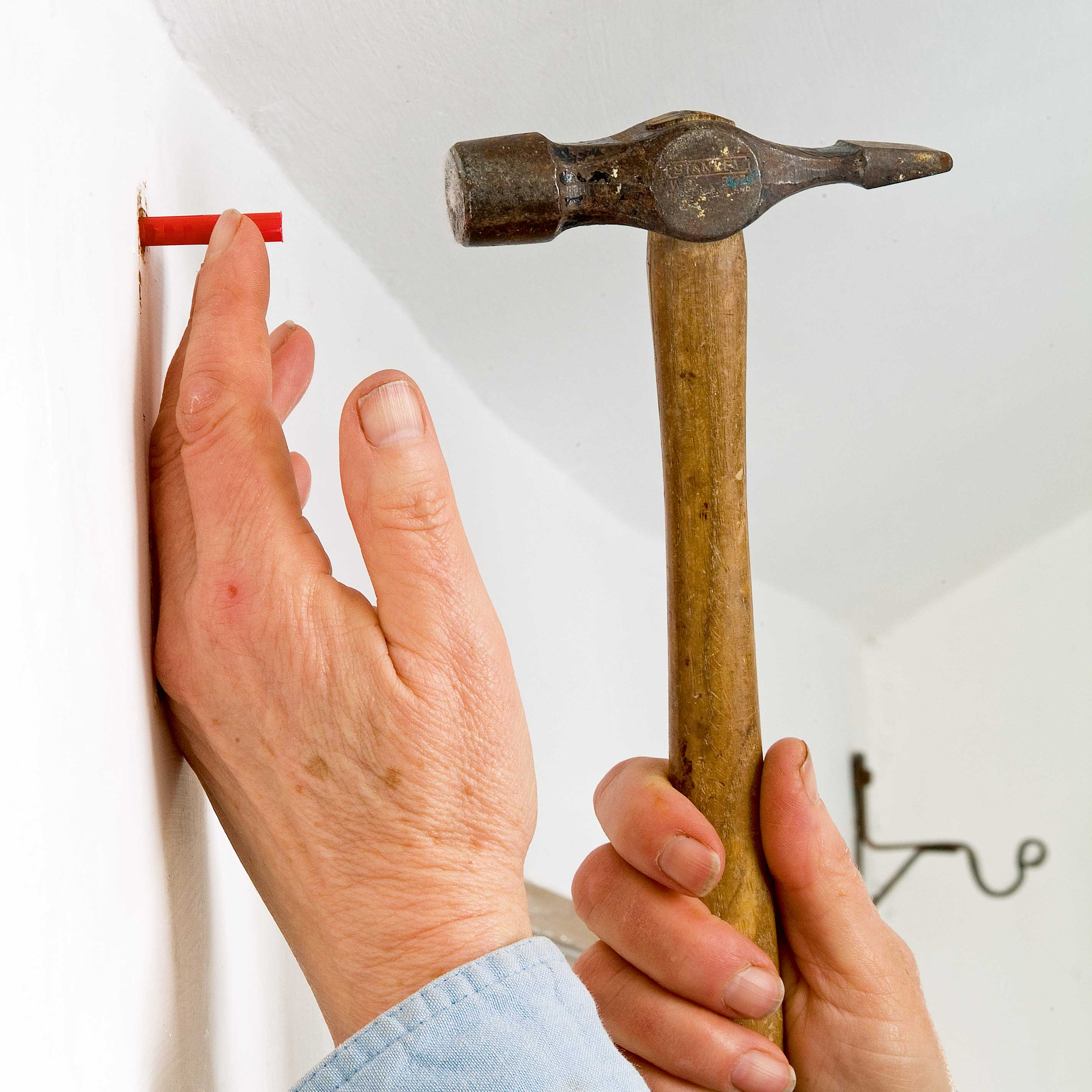
Masonry fixings often fail because the hole and plug are too big for the screw, so always match the size of the drill bit, wall plug and screw.
Ensure the hole is deep enough, too – if your drill doesn’t have a depth gauge, put a piece of painters tape on to the bit to mark the length of the plug, plus 6mm.
7. Repair a door that sticks
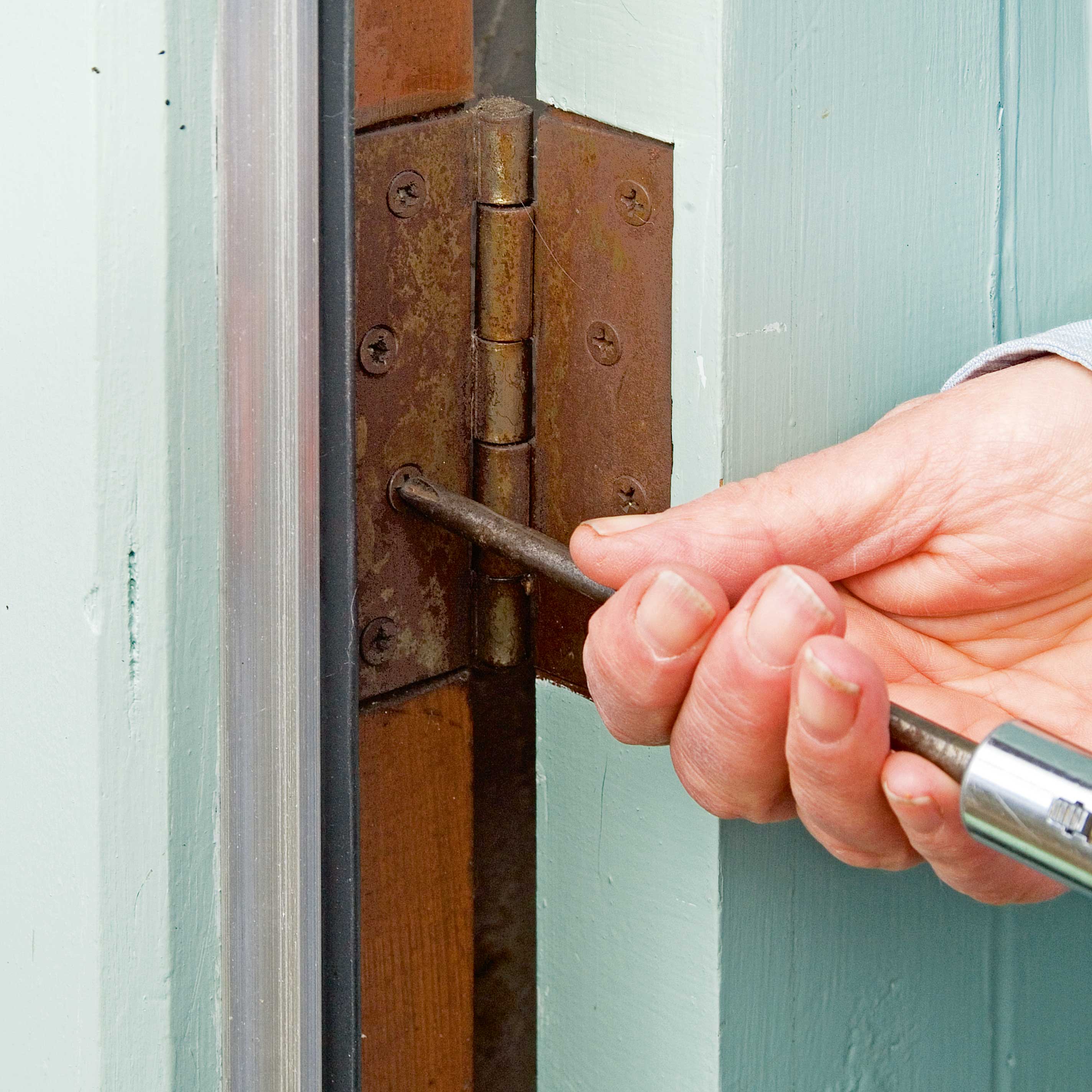
Wet weather can cause wood to swell and doors to ‘bind’ or stick. Painted doors are better protected, but natural wood can be varnished or oiled for weatherproofing. Identify a swollen area by rubbing a wax crayon along the edge of the door and opening a few times. Use coarse glasspaper to smooth areas.
Doors that require brute force to open or close need fixing sooner rather than later to prevent joints from weakening or the handle shearing off.
With the door open, check a stone hasn’t got jammed against the frame. Inspect hinges and tighten screws. Lubricate with a few drops of oil to ease movement.
8. Opening a stuck sash window
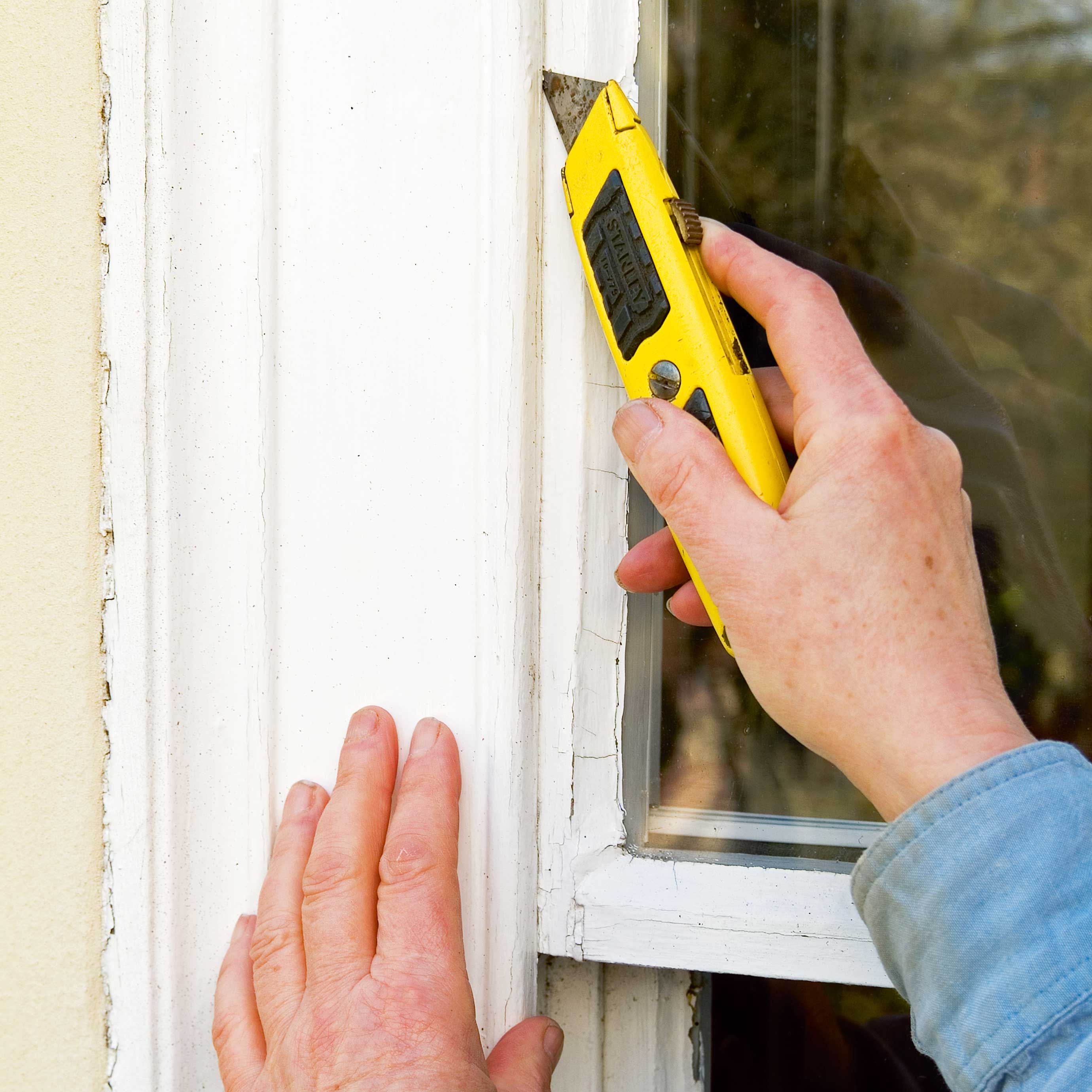
When painting a sash window, move it regularly while the paint dries to prevent it sticking. If the sash is stuck, score the edges with a craft knife, then work a filling knife between the sash and the beads – you may need to ease it from both sides. Grasp the meeting rail and shake the sash to break the paint seal.
9. Rehanging a coat rail
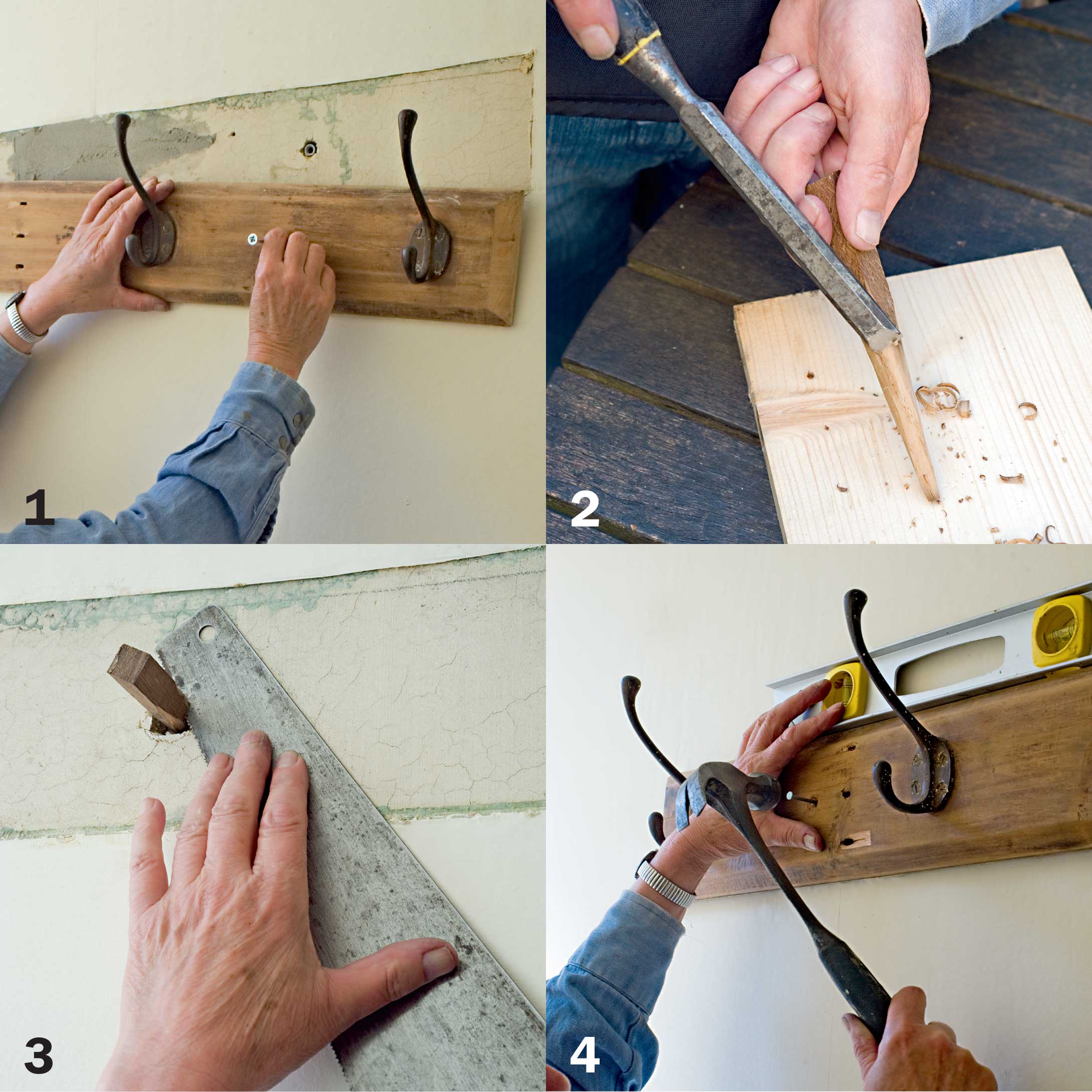
1. If screws are pulling away from the wall, the first task is to unscrew the rack to look at the fixings. Here, there is one fixing at each end but to give extra support, add another in the middle.
2. The bricks in this house are soft and crumbly and the screw holes are worn and now too big. You can use a chisel to fashion a tapered peg from a piece of wood, in which to put back the screw. Don’t smooth the peg’s surface, as a crude finish will grip into the masonry better.
3. Knock the peg into the wall then saw off so flush. Unless you plan to repaint, place a sheet of thin card beneath the blade. To keep the cut straight, press the blade with your free hand. Mark the center of the peg with a bradawl, drill and fix rack – but don’t fully tighten the screw.
4. Hammer a peg into the other side. Hold spirit level on top of rack and tap a nail in the peg to hold in position. Drill hole and insert screw. Tighten both screws securely. For a neat finish, countersink screw heads beneath level of rack and hide with wood filler.
10. Rehanging a dropped cabinet door
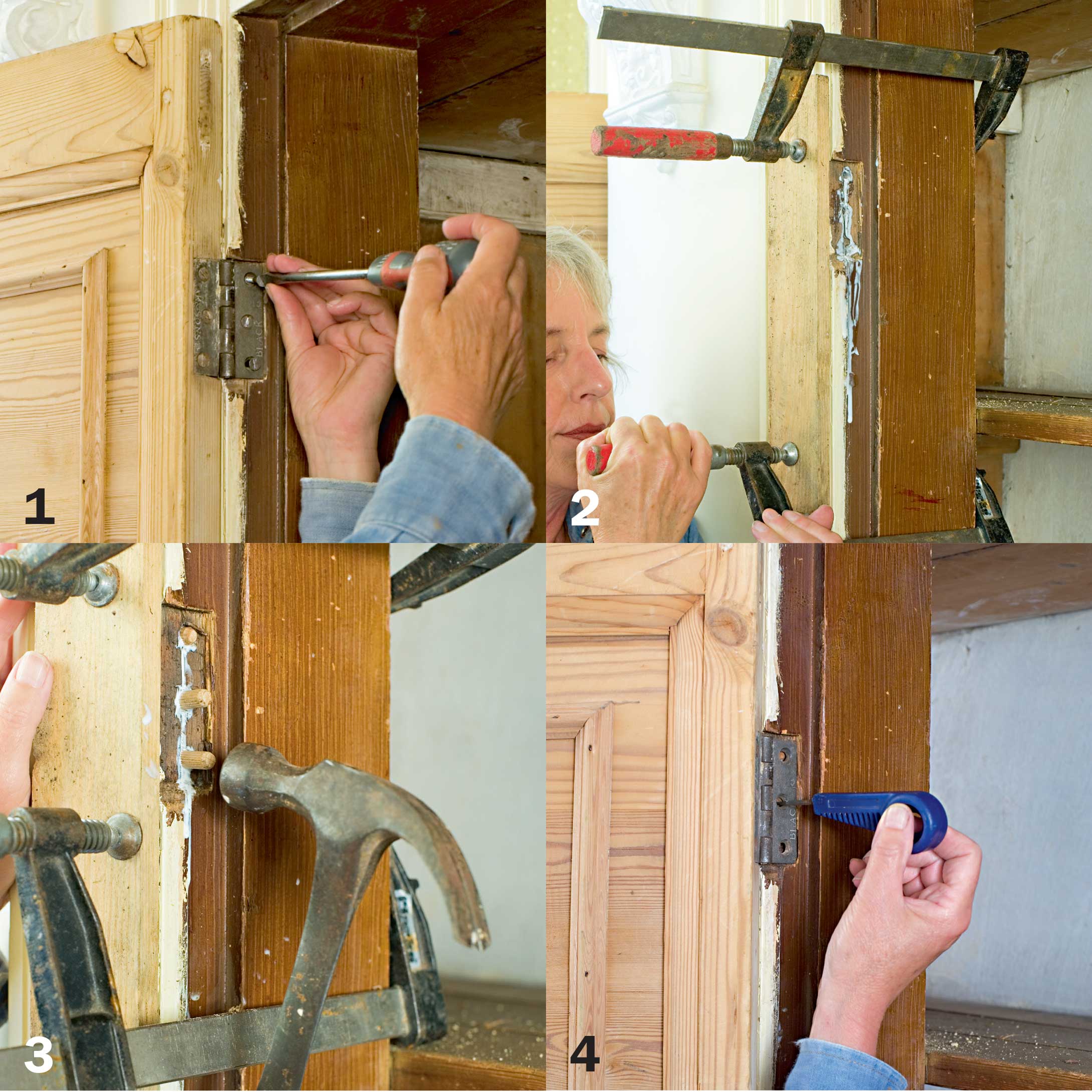
1. This cabinet door has dropped – opening and closing it is a struggle as it scrapes along the floor and has to be lifted up at the same time. Where both sets of hinges have failed, as here, take out all of the screws and remove the door to carry out some running repairs. Spray release oil on difficult-to-turn screws.
2. The wood behind the hinge has a deep split. For a successful bond, first clean away dust with a brush or scraper. Force glue into the gap. Clamp firmly while glue is drying, protecting the door frame with a wood off-cut. Wipe away any surplus glue with a damp sponge before it sets.
3. The strain on the hinges has worn and enlarged the existing screw holes. We strengthened the fixing by using wooden dowel pins. Drill holes with a bit the same diameter as the dowels and apply masking tape to the bit, to serve as a depth gauge. Rake out the holes. Smother dowels with glue and knock in place.
4. Prop the door against the frame, raising it up fractionally with plywood off-cuts. With a bradawl mark the position of the middle screw on each hinge. Drill holes and drive in screws. Open and close the door a few times and once you are satisfied the door operates freely, insert remaining screws.
11. Deal with a power outage
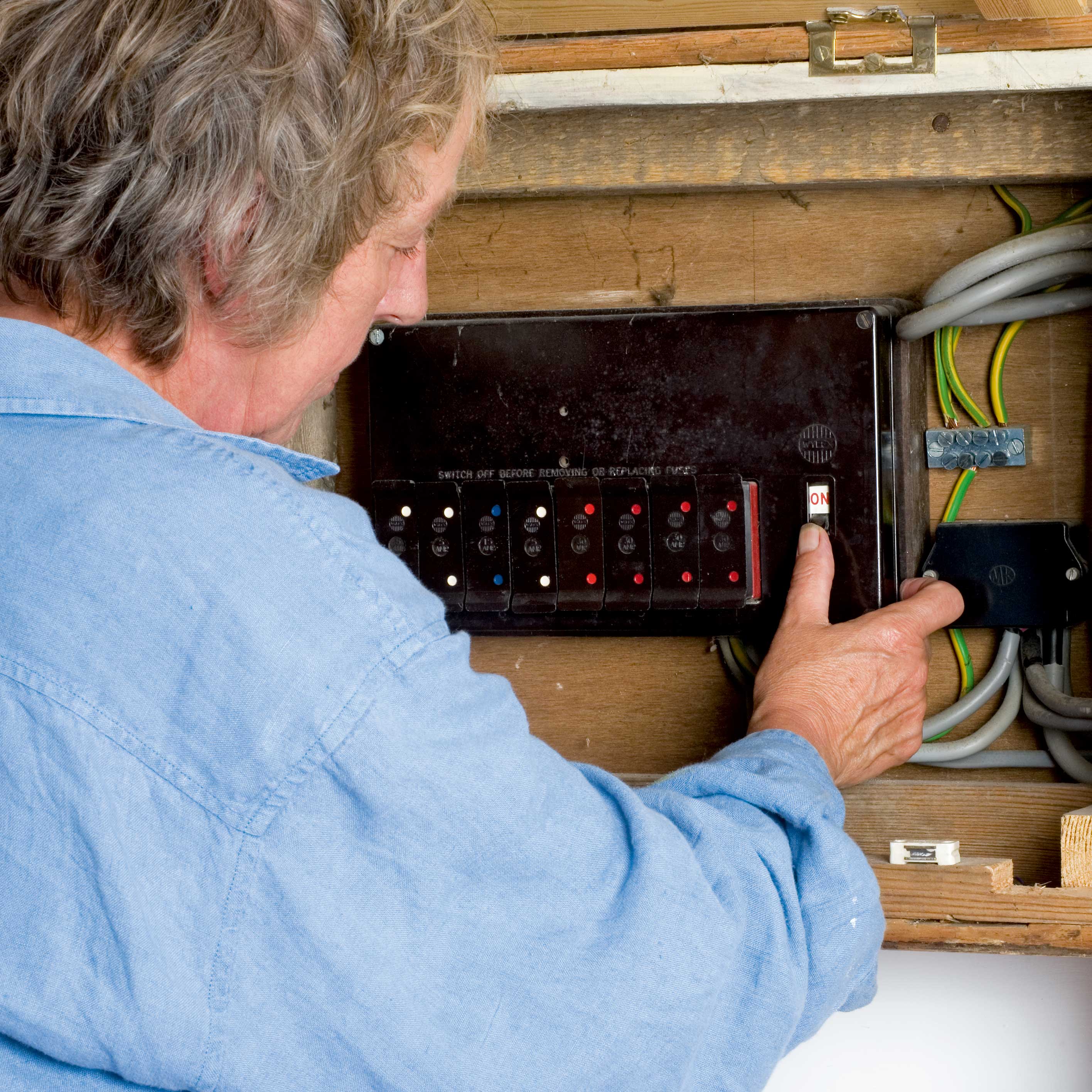
First, see if neighbors are affected. If so, telephone the emergency helpline of your distribution company, who should tell you when the power will be restored.
If it's just your house with a problem, check your trip switch in the main fuse box.
If you reset the trip switch but the electricity goes off again, you may have a faulty appliance. Reset the trip switch and turn each one on one by one.
Once you have identified the problem appliance check the plug, then try it in a different socket to establish if the fault is with the appliance or the original socket.
12. Easing an awkward key
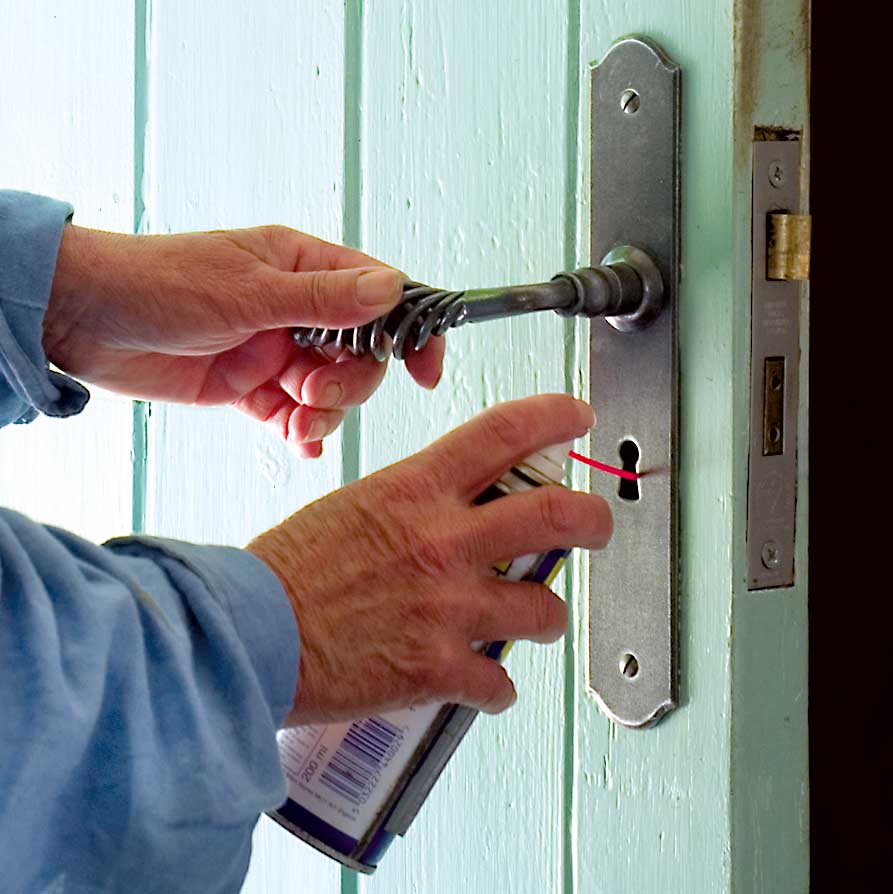
If the key is new, return it to the locksmith with the original for fine-tuning. Or lubricating spray may work but avoid oil, which attracts dirt and clogs the mechanism.
In extreme cases, call a locksmith. Rather than total replacement, a Yale type lock can be fitted with a new cylinder or barrel, and a mortice lock re-levered.
13. Polish up furniture
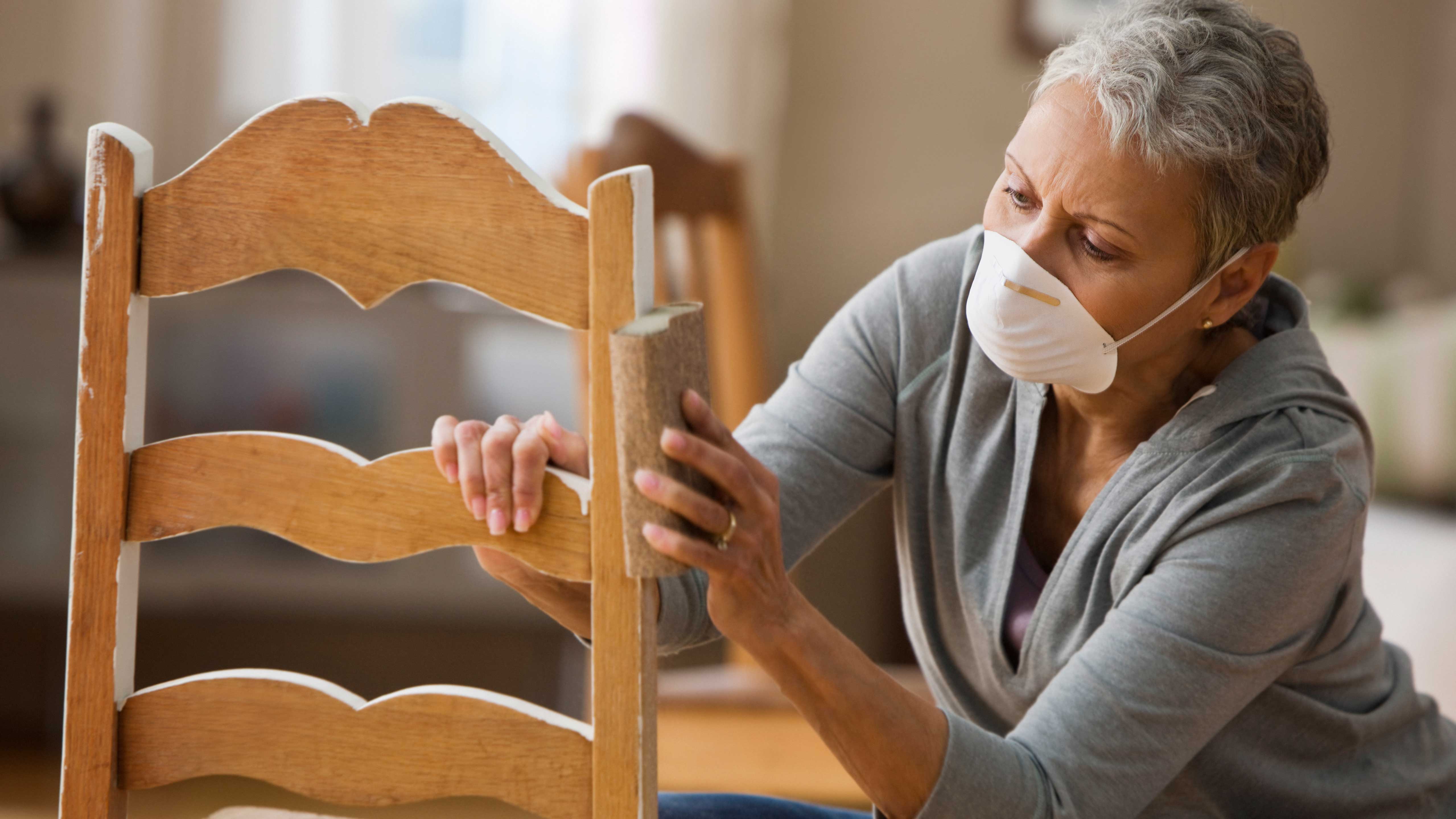
Old furniture is full of character, but over the years fixings fail and wood warps, making it function poorly. However, a little TLC employing a few basic techniques and polishing wood also will have these treasured old items of furniture looking and working like new.
14. Tightening loose knobs and handles
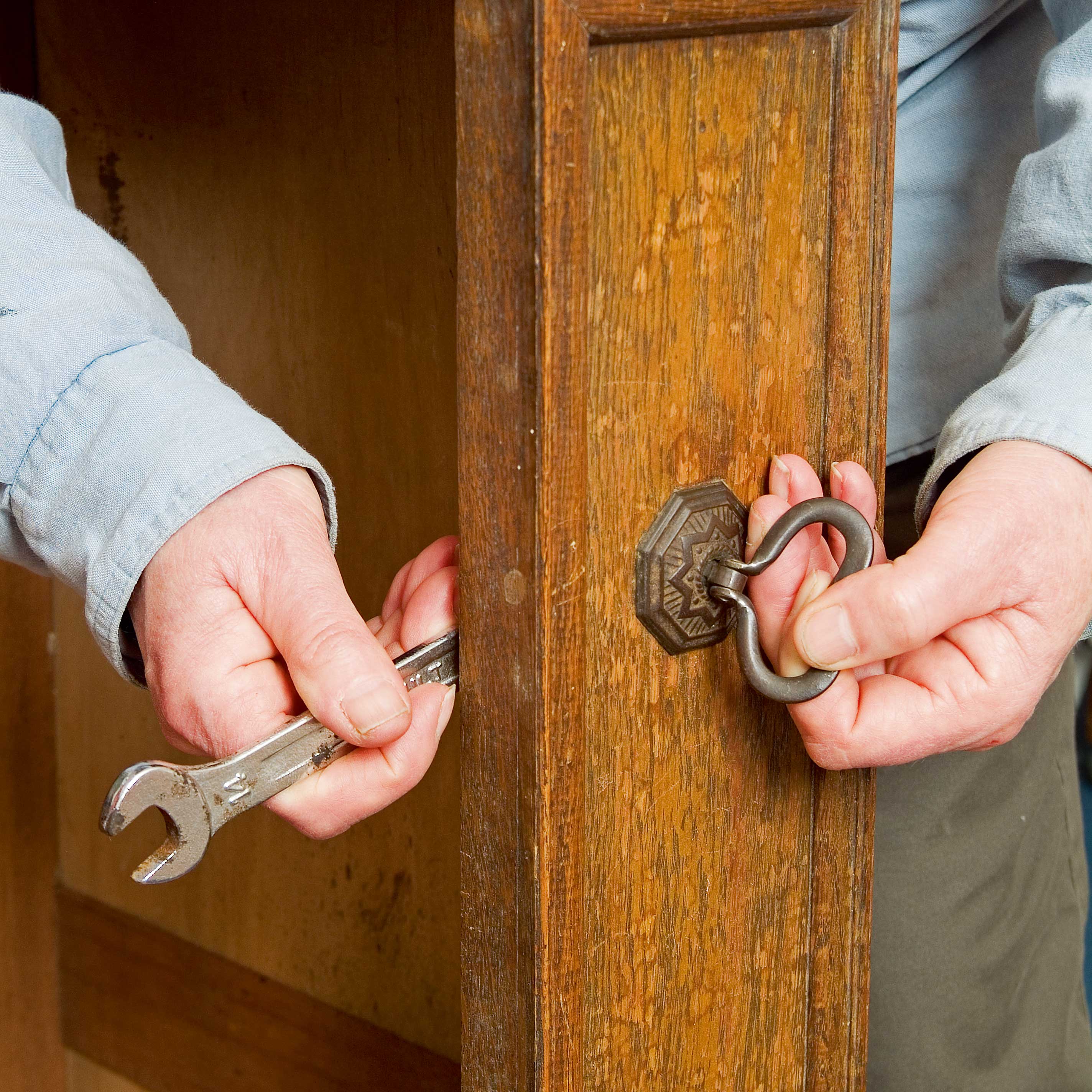
Some knobs are screwed into the wood and regular use can make them work loose and enlarge the hole. Push wood filler into the hole or tap in a piece of matchstick or dowel dipped in wood glue.
Metal handles often have a small rod that goes through the wood, secured with a nut. Tighten with a spanner.
15. Fixing a dresser drawer that sticks
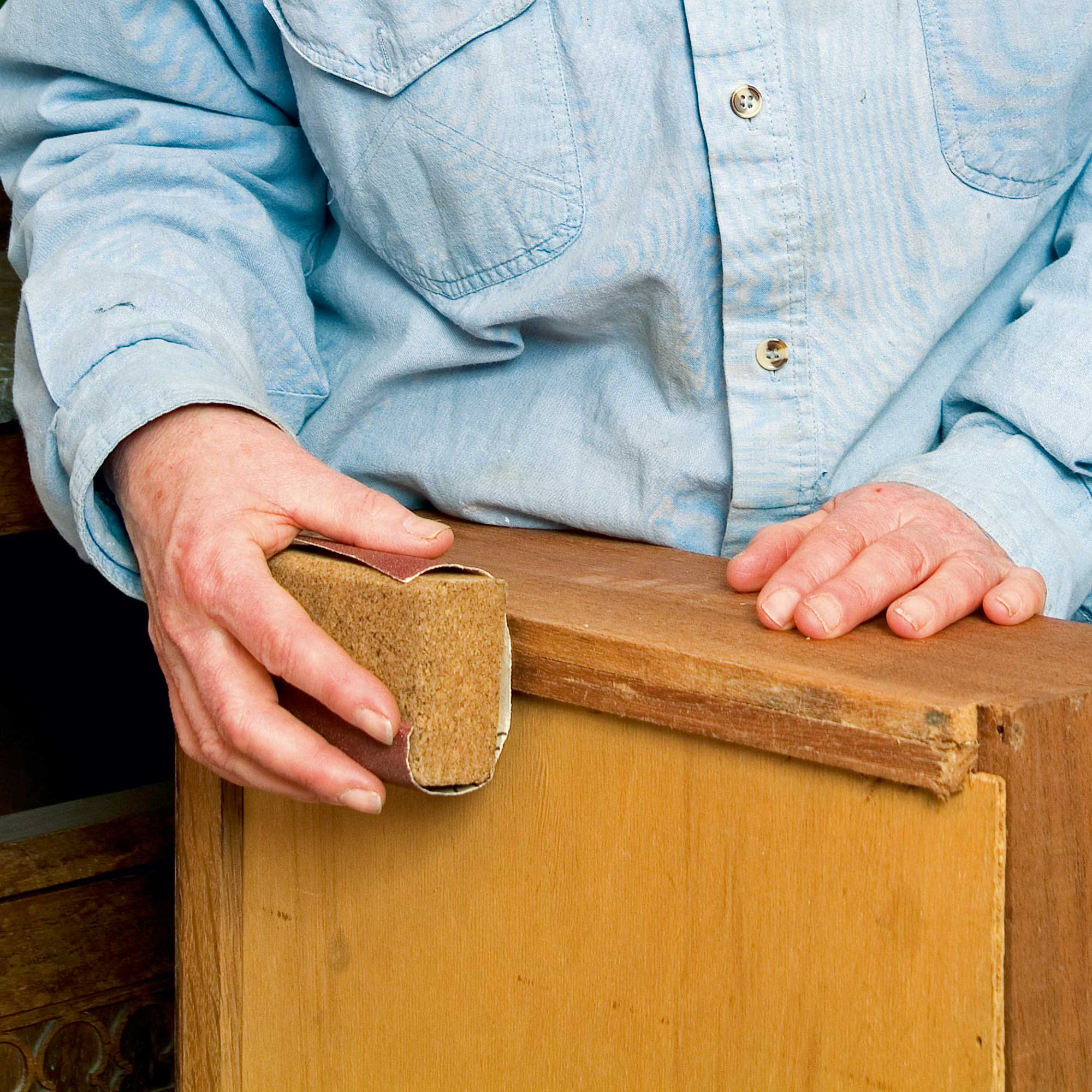
Check nothing has fallen out and become lodged down the back of the drawer. The runners (strips of wood inside the carcass that the drawers slide on) or the undersides of the drawer can become rough.
Check nails are not protruding, then smooth with abrasive paper and rub a candle stub along surfaces.
Use a spirit level to check the drawer is sitting straight, and if necessary even up the carcase with cardboard.
16. Level a wobbly chair
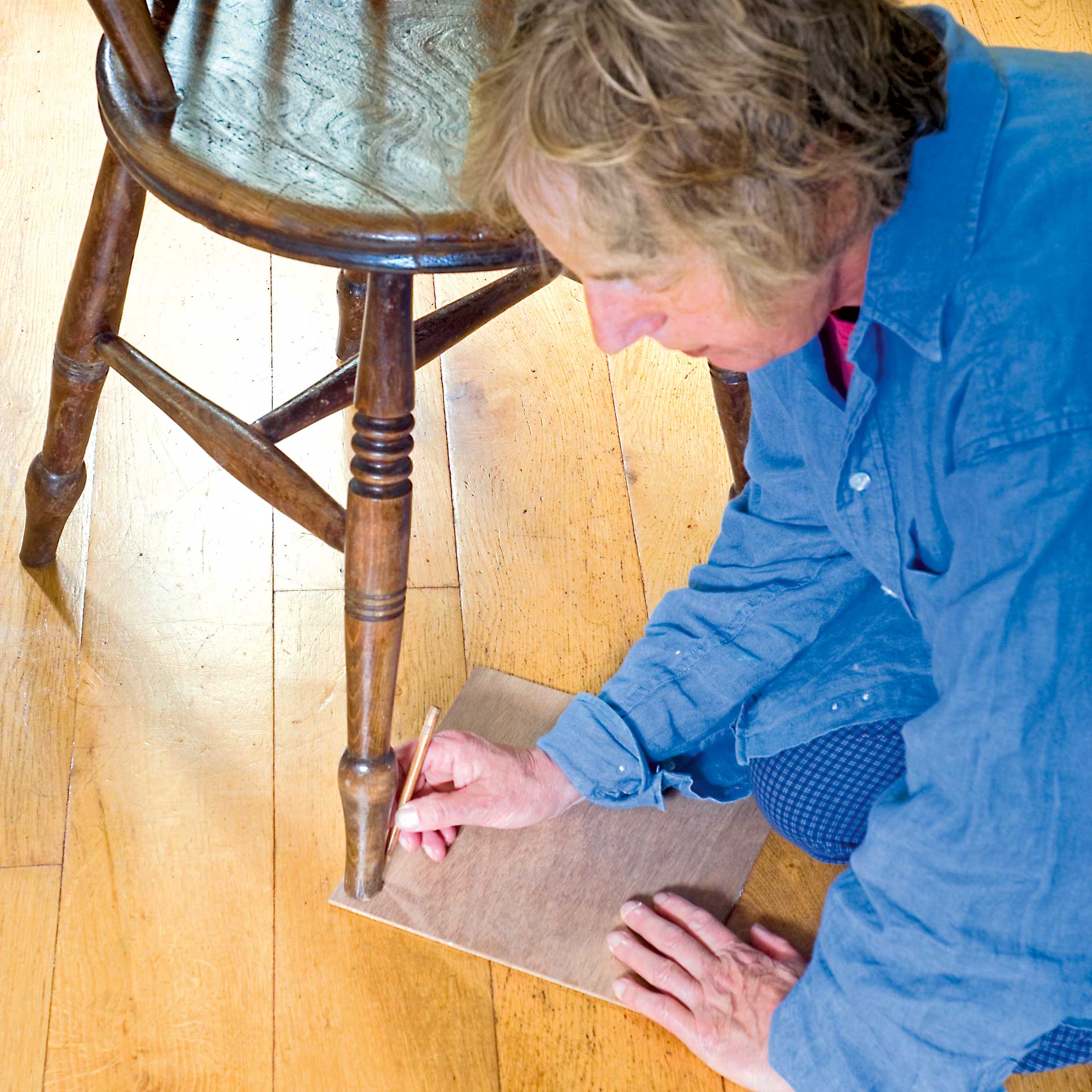
Don't level chair legs by sawing them down – instead build up a shorter leg. Place the chair on a flat surface and slide under off-cuts of wood until stable.
Draw round chair leg and saw off a circle with a fine-toothed saw. Glue and screw in place.
Minimize movement by placing a sticky-backed glider on the bottom of each leg.
17. Fixing a cabinet door catch
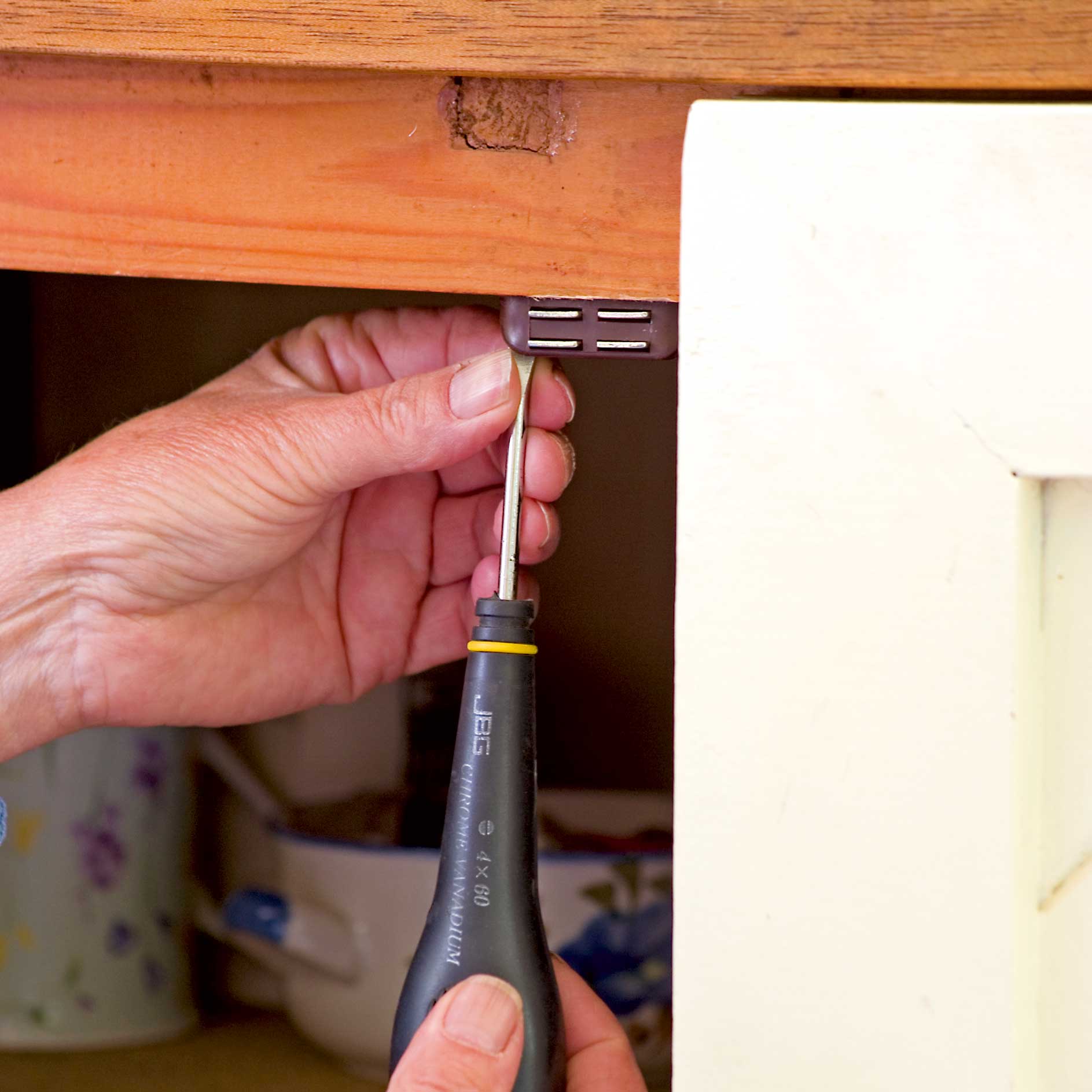
New cabinets have sprung steel hinges to pull doors in, but older ones often have magnetic catches that become unaligned. Check the metal non-magnetic part of the catch hasn't lost a screw, causing it to skew.
The magnetic part is held by two screws; loosen these and push catch forward. Retighten screws.
18. Plumbing maintenance

While complicated plumbing jobs require the expertise of a qualified professional, when a pipe bursts or freezes, or the drain is clogged, you need to act fast to sort it out before it results in expensive damage. Tend to any plumbing issues as best you can which will at the very least tide things over until the experts arrive.
19. Maintaining your stopcock
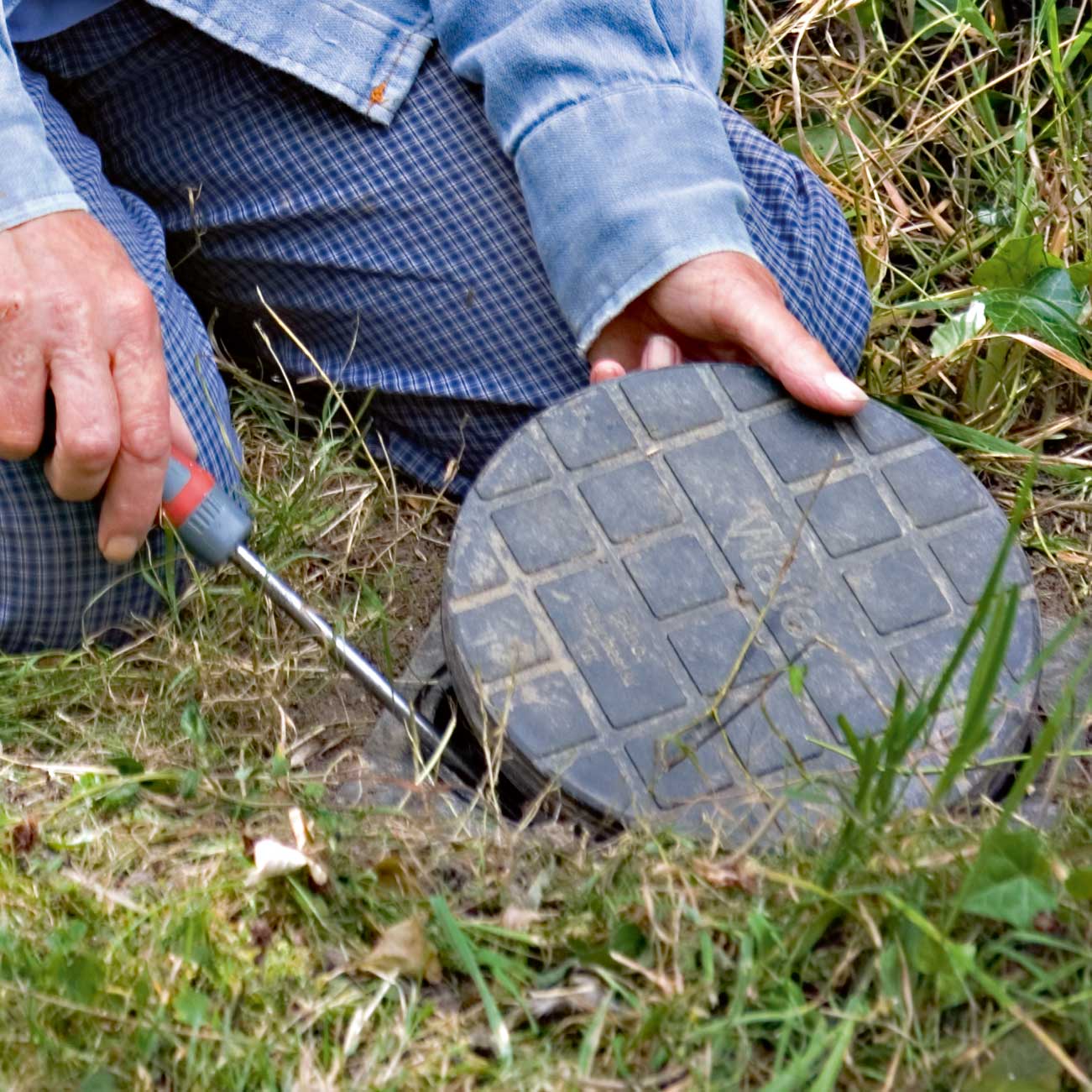
The mains stopcock inside a house is often beneath a downstairs sink, usually in the kitchen, or in a hall. Make sure you know where yours is.
Twice a year, spray it with release oil and turn it off and on again a few times. Once it is fully off, turn it back on a quarter of a turn so that it is less likely to seize up.
Mark the spot of the outdoor stopcock, too.
20. Unclog your dryer vent
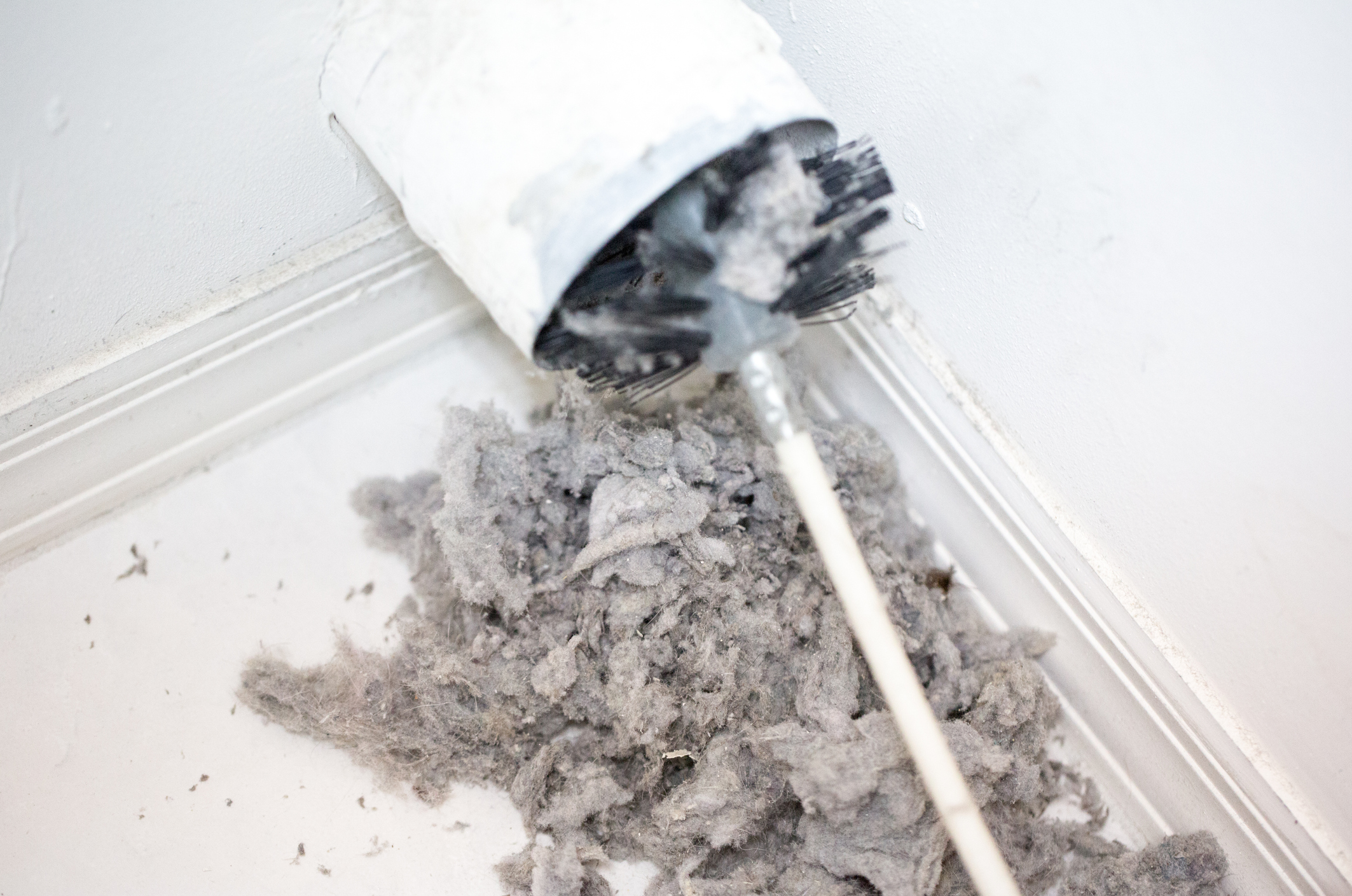
If you have a dryer at home then you need to ensure that the vent is clear at all times else this can be a fire hazard. Clean a dryer vent and unblock it yourself by disconnecting it, then removing visible (and less visible) lint, in a few easy steps.
21. Installing isolating valves in faucet
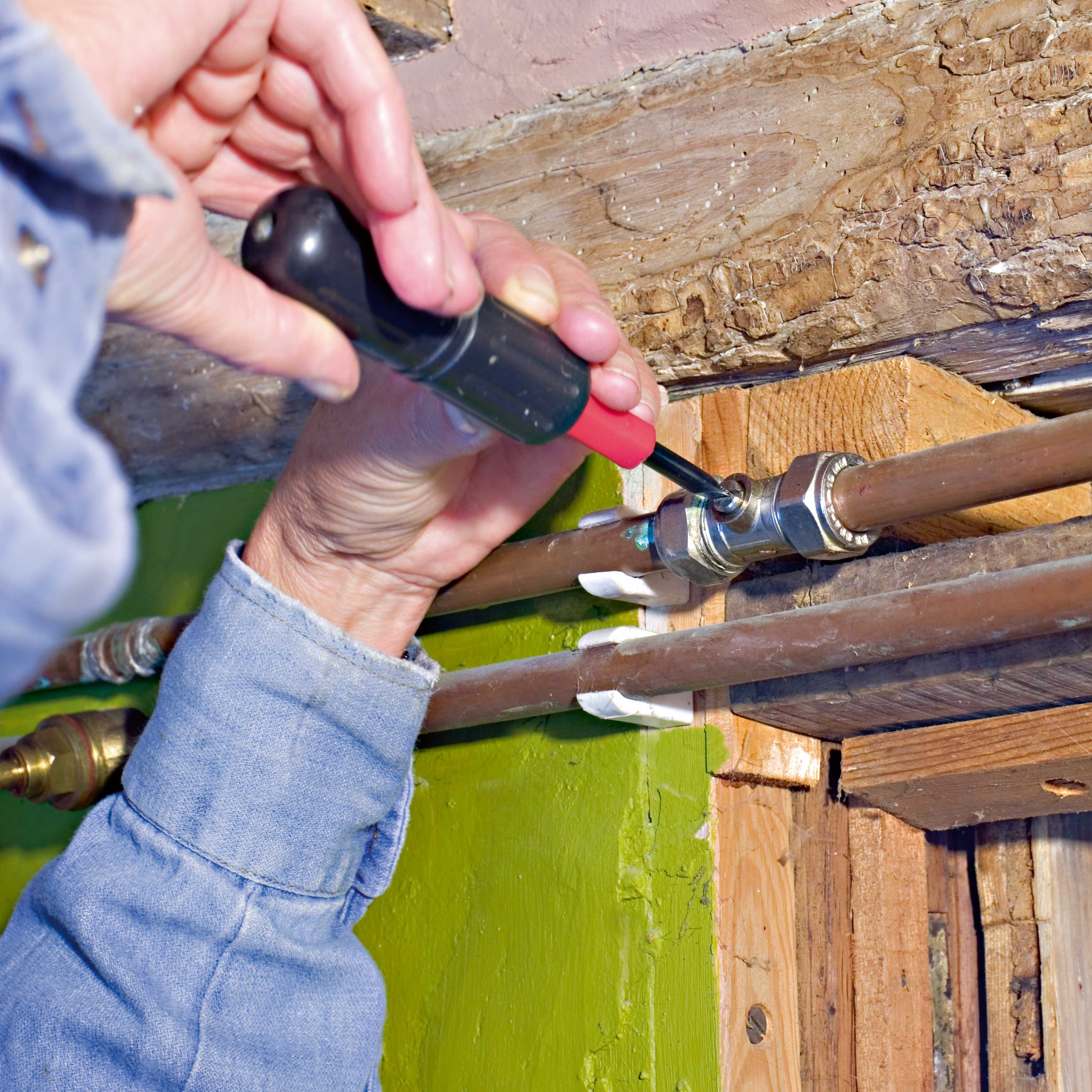
If you have any plumbing alterations or reno work done, make sure that each faucet is fitted with an isolating valve so that you can easily turn off the water for a specific section if there is an emergency, or if you need to simply replace a washer. This will give you peace of mind and help to prevent leaks.
22. Maintaining gate valves on pipework
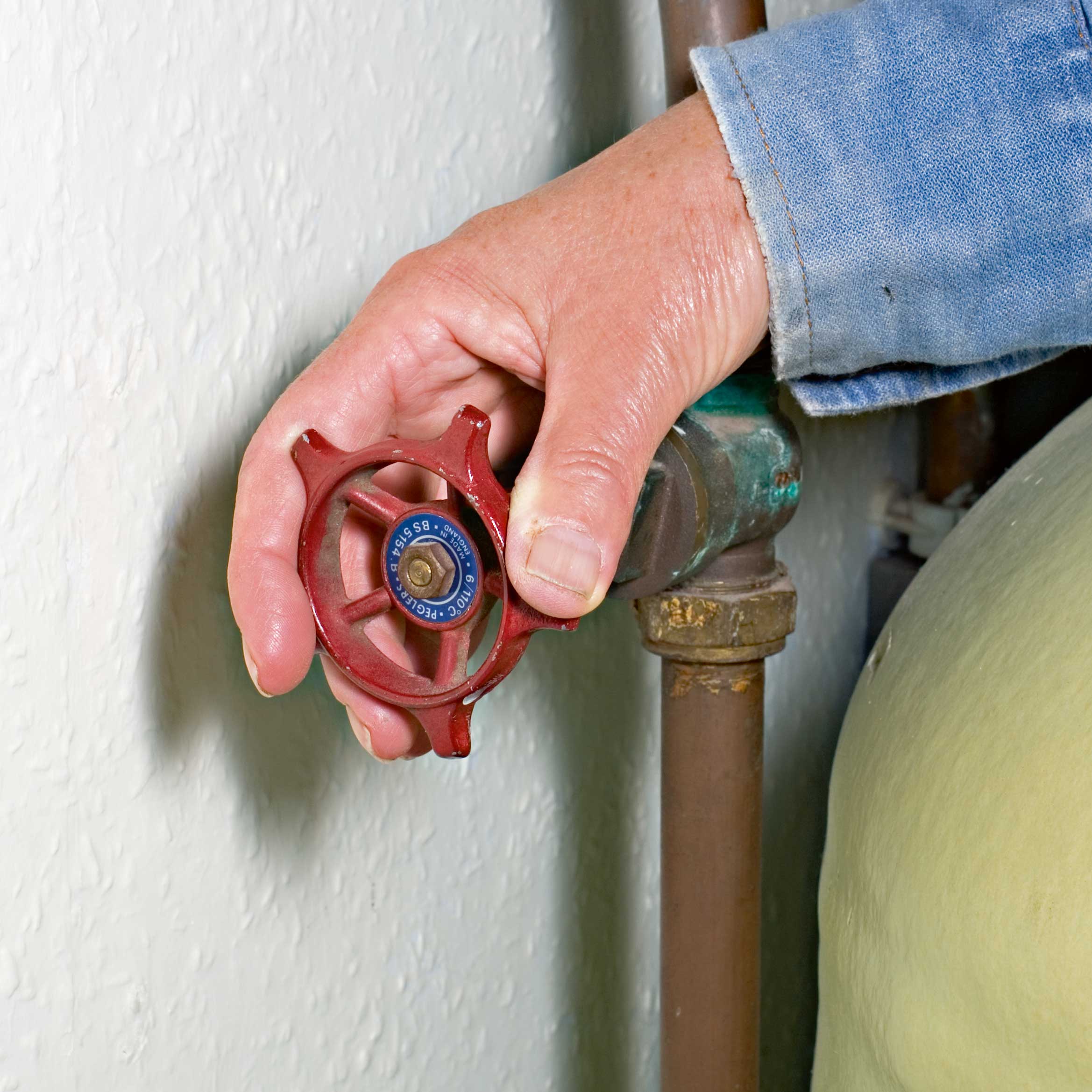
Twice a year, turn gate (sluice) valves off and on and give them a spray with release oil to stop them seizing up.
Familiarize yourself with which section of pipework each valve regulates, and make a note next to the valve – a card luggage label can be tied on and is easy to access and also a practical reminder.
23. Defrosting a frozen water pipe
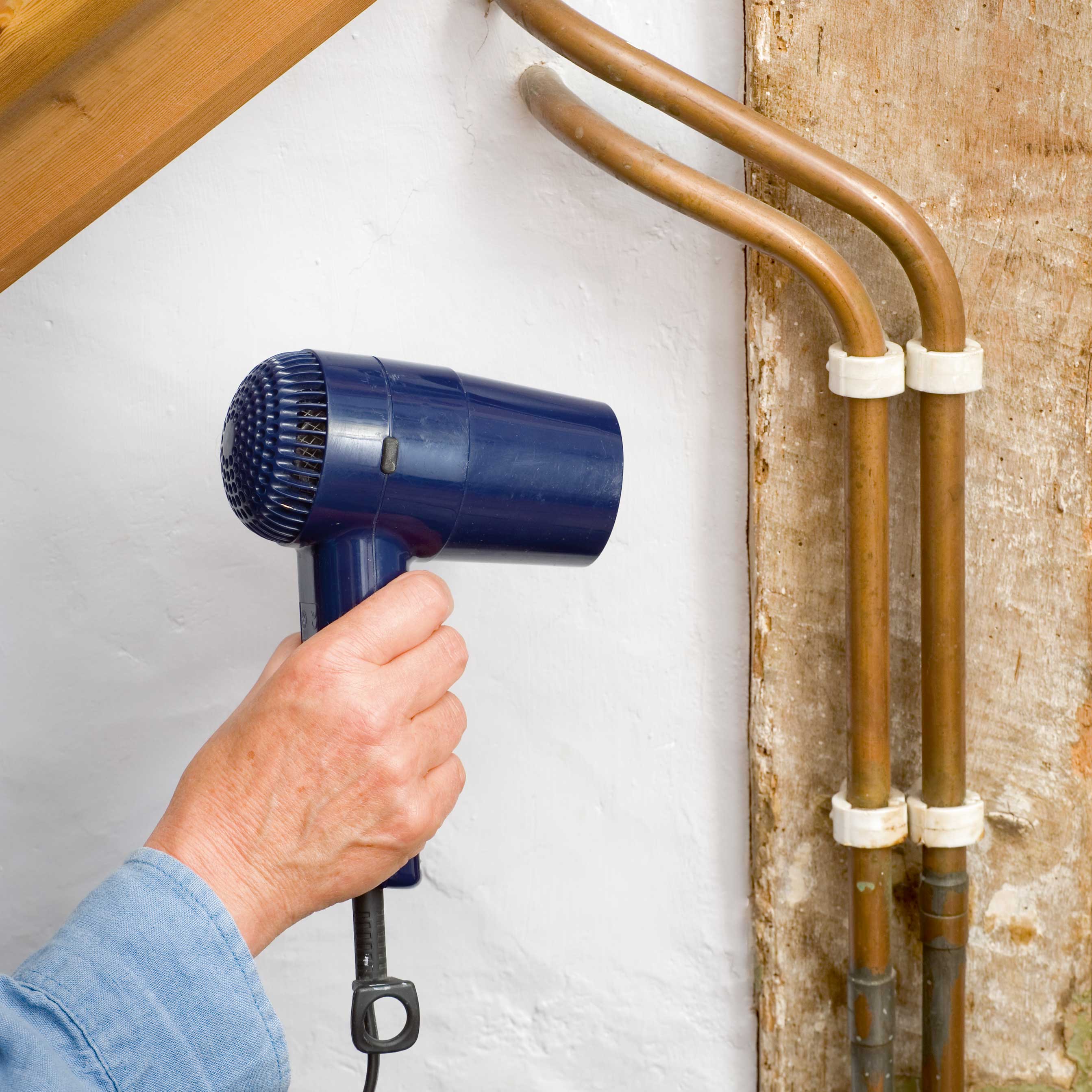
Minimize damage when doing this home repair by turning off the mains stopcock, and if you have one, the cold water tank stopcock in the roof space. Cover area with plastic sheet in case of leaks.
If there is no sign of a split in the pipe, open the faucet nearest to the frozen section and very gently blow a hairdryer on the pipe beginning at the faucet end.
24. Repairing pipes with tape and hosepipe
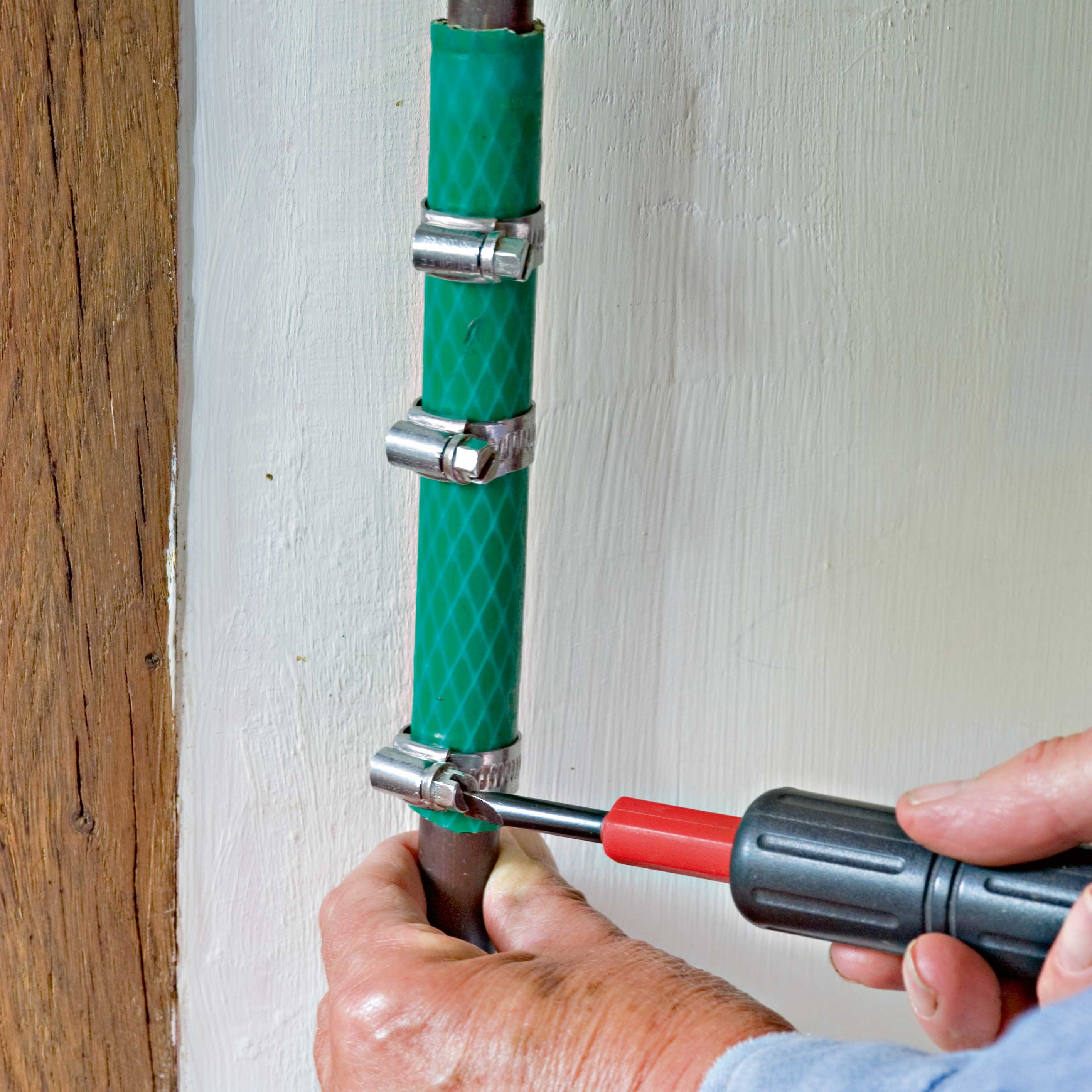
In very cold weather, if a cistern won’t fill or there’s no water from a faucet, it could be due to a frozen pipe, probably in the roof space.
Examine the pipes: a bright, shiny copper split shows up on dull pipes. If split, wrap with duct tape and slip on a short length of hosepipe secured with jubilee clips or wire. This makes a great temporary repair until you can get the section of pipe replaced.
25. Repairing a pipe with epoxy putty
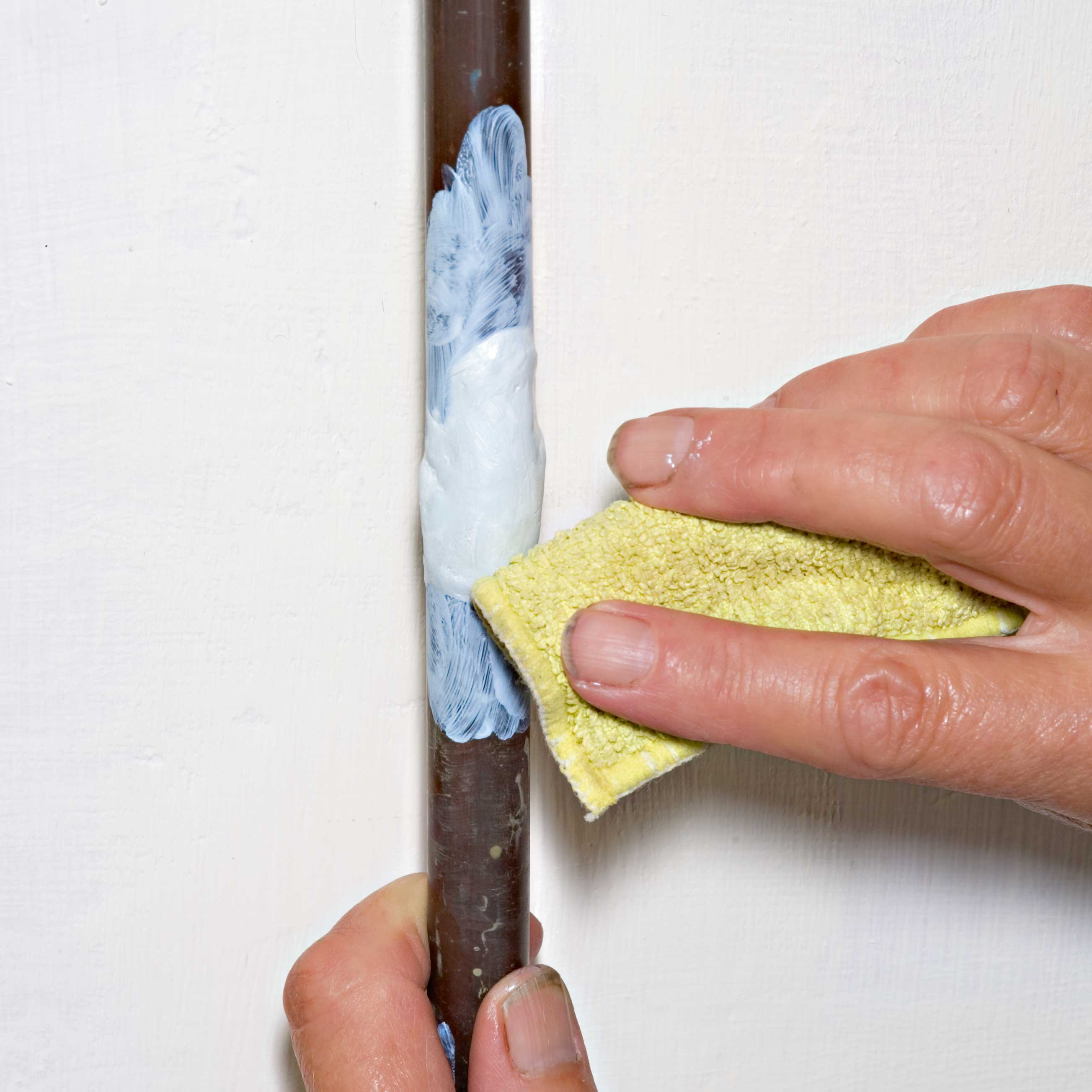
As an alternative to hosepipe, make a repair to the pipe with epoxy putty. These are temporary measures, so lessen the stress on the pipes by turning down the mains water pressure.
26. Unclog a blocked shower drain
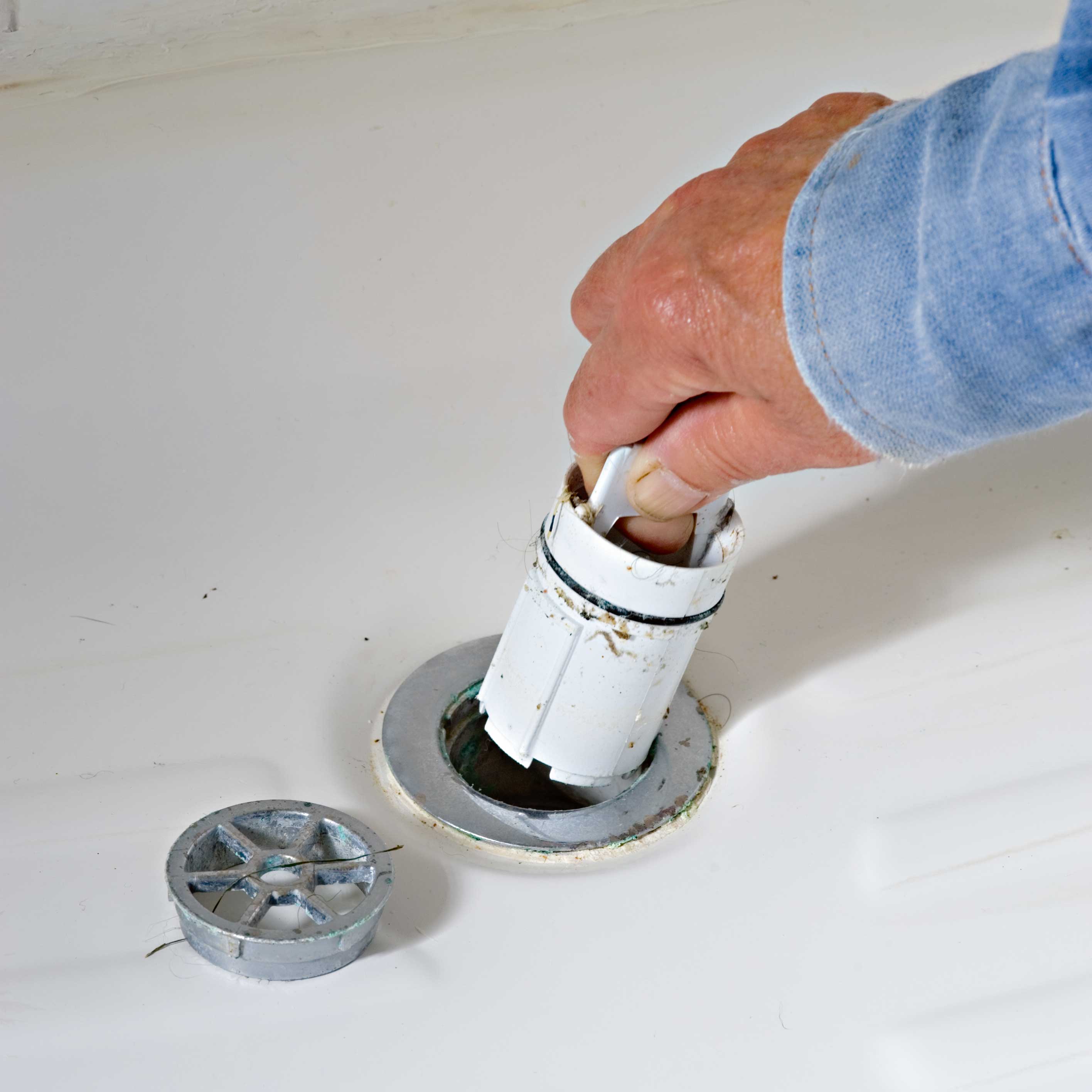
If water is sluggish to drain away, take action before it becomes a total blockage and the shower tray overflows. If there is a trap, lift it out and clear away debris.
Otherwise find a piece of wire and bend over the end to form a hook. Pull out the clog (often shed hair) then use a plunger until water flows freely.
- See more: How to unclog a shower drain.
27. Fixing a cistern overflow
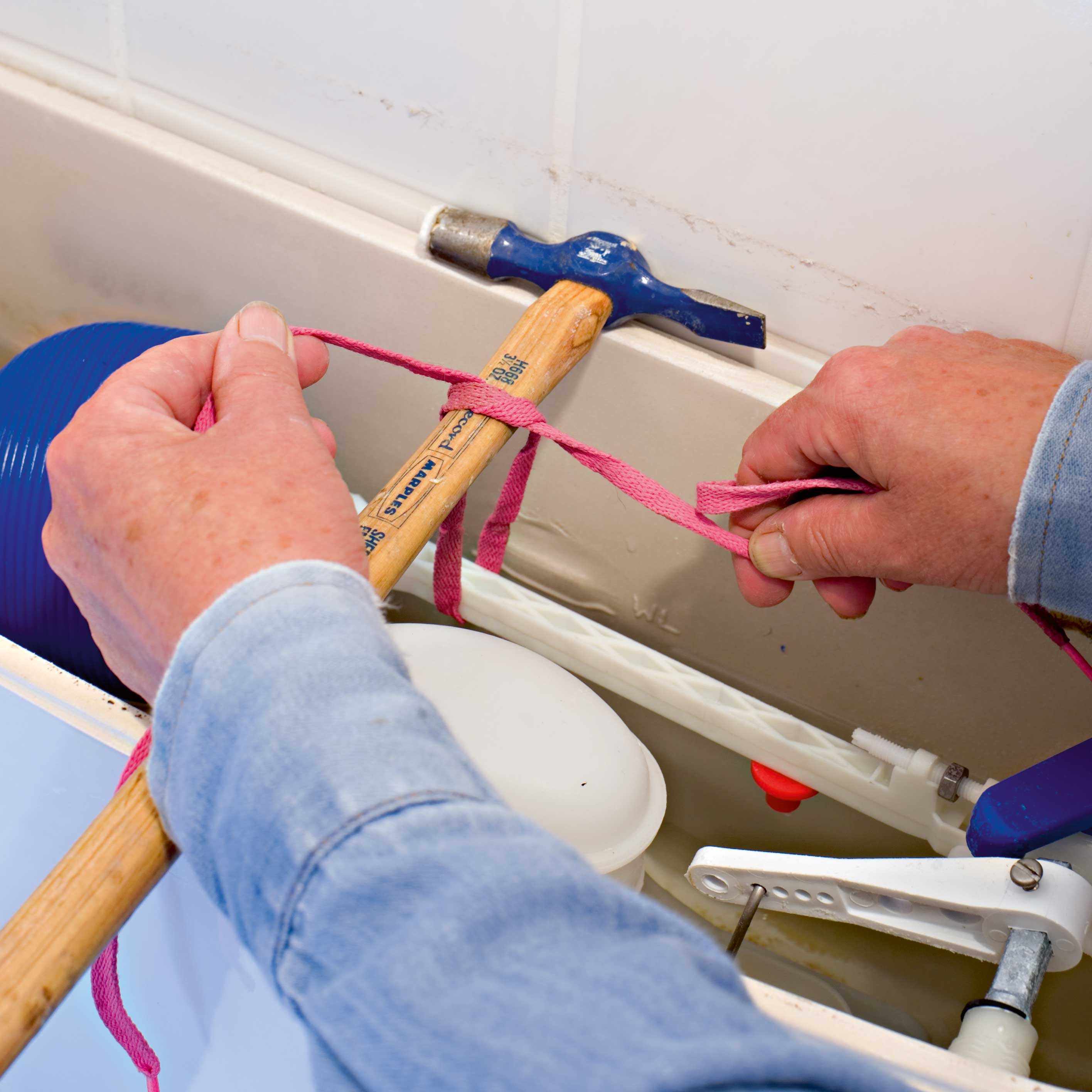
In a cistern, the ballcock rises with the water and the flow cuts off about an inch below the overflow pipe.
If the water is too high, the ballcock needs adjusting. In old cisterns, bend the metal arm downwards. In modern cisterns with plastic parts, release the locknut, turn the screw clockwise, then re-tighten the locknut.
If water is pouring from the overflow of a toilet cistern or cold water cistern in the loft, lay a piece of wood across the cistern and tie the float arm to it to stop the flow so that you can investigate the cause.
Common problems are a leak in a metal ball float or a faulty float valve. You can buy replacements.
28. Sorting out a toilet that won't flush
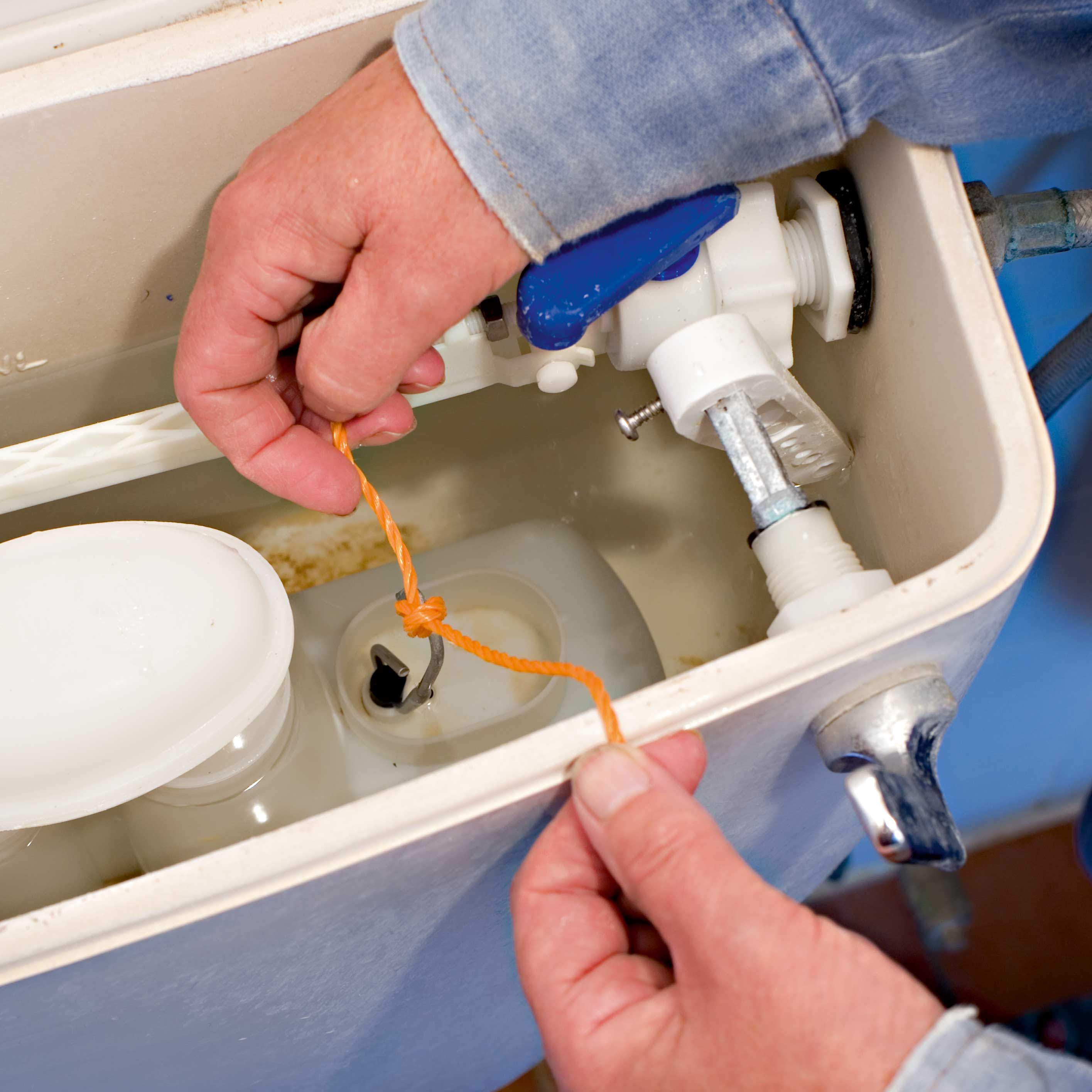
If the toilet does not flush, it is likely that the lever has become detached; over time the wire link wears through the plastic lever connector.
Remove the top of the cistern and, until you can get to the DIY shop, tie a piece of thick string to the wire link and leave it overhanging the cistern. Just pull string upwards to flush.
29. Unclogging a toilet or drain
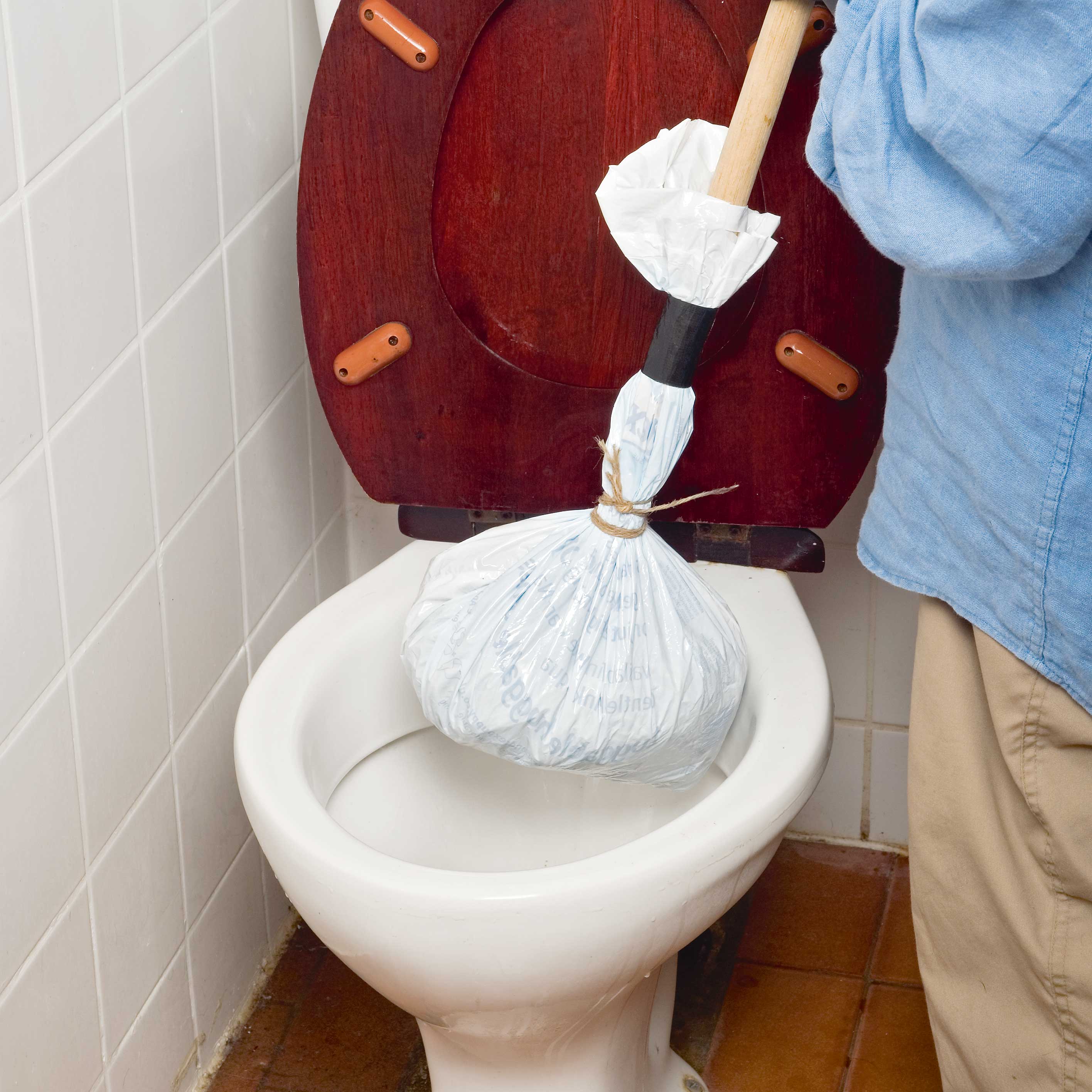
You might need to unclog a toilet if the water level in the bowl is higher than usual or is taking longer to clear after flushing. Turn off the cistern isolation valve or tie up the ball valve. Protect your arm by covering it with a bin bag and check the pan.
If the blockage is further along, bailout excess water and unblock using a drain auger, a long flexible tool that will prise a blockage apart.
If you've tried a plunger and cleaned the u-bend, you need to clean the pipe leading to the outside drains.
Once all the pipes are clear, run hot water and soda crystals down to flush away any detritus.
If the drain is still blocked, check the gully grate outside and remove debris. Raise the manhole cover nearest the house and slide two drain rods towards the blockage.
Add more rods as needed and continue pushing while working them backwards and forwards. Turn rods in a clockwise direction to stop them unscrewing.
30. Unclogging a slow-draining basin
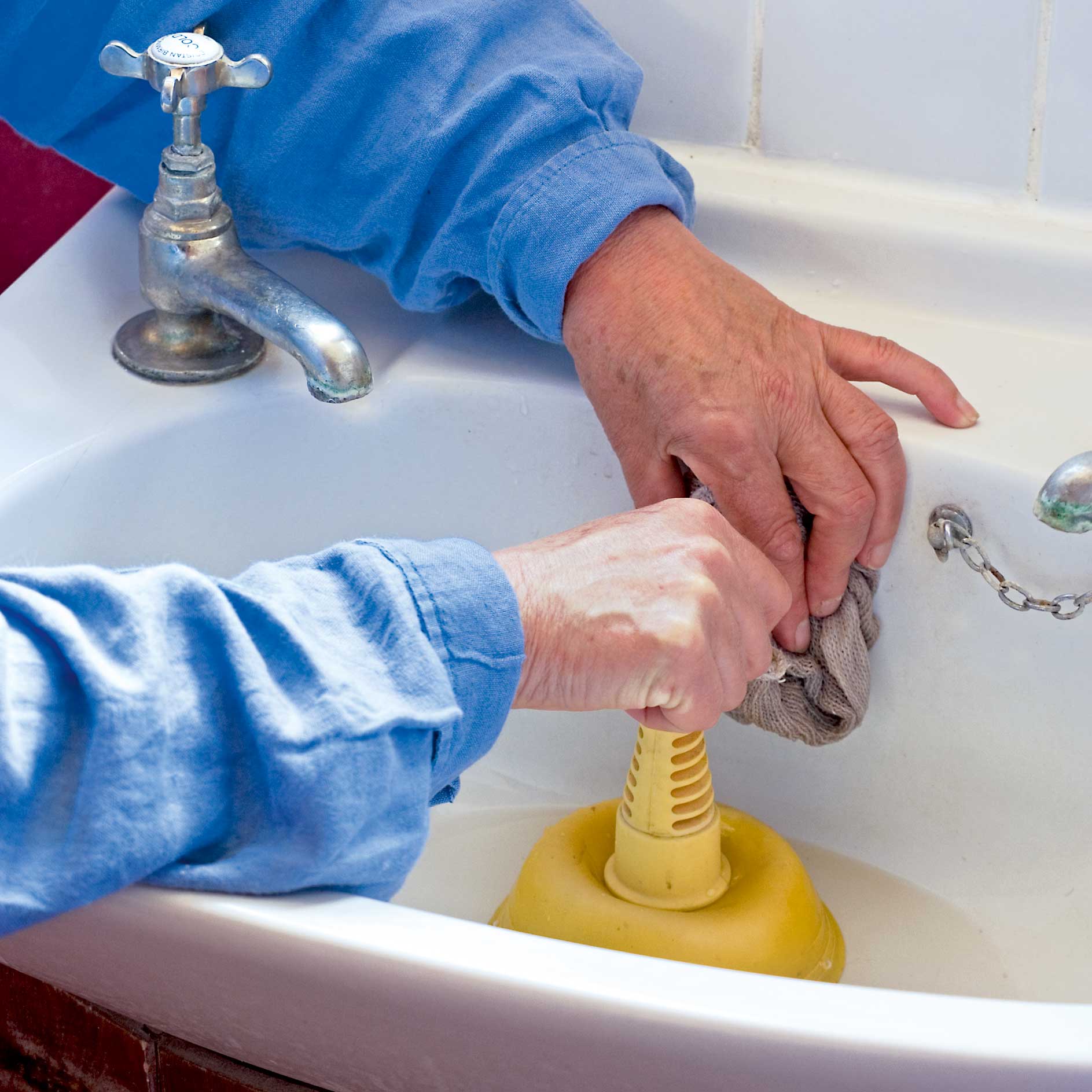
Sluggish draining and smells can signal a partial sink blockage. First, pull out debris with a piece of bent wire to get started with this home repair.
Next, half fill a basin with water and stuff a cloth into the overflow to stop air pressure escaping. Place plunger over the plughole and plunge vigorously to force the blockage away. Repeat if necessary.
31. Repair old plaster
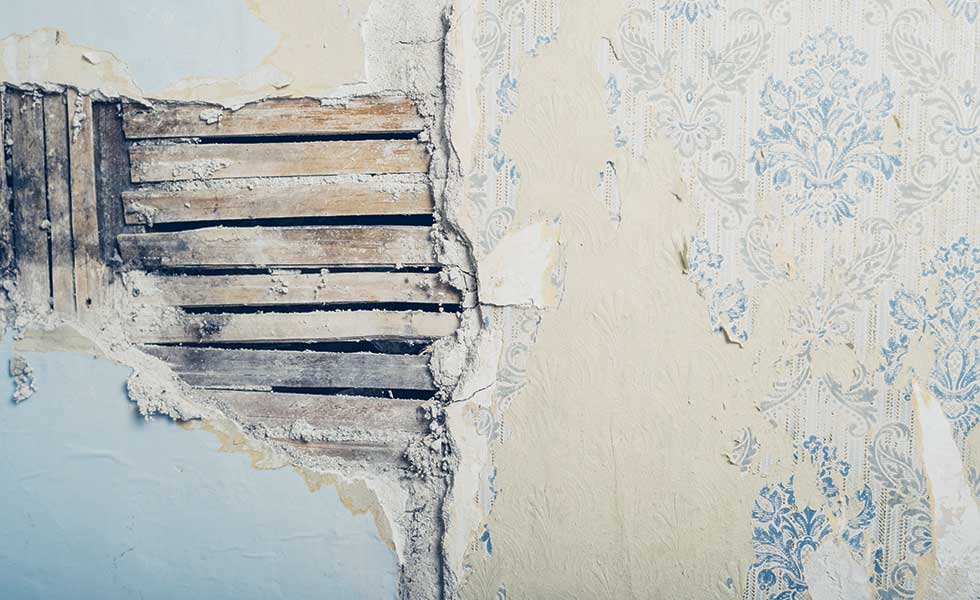
If you're renovating then you might come across visible bulges and cracks in plaster which signals the need for home repairs. You should repair damaged plaster asap, and catch out early signs of damage to reduce the need of a costly professional. Superficial cracks can be resolved usually with good filler, however, if in any doubt do consult a structural engineer, especially if your house is old.
32. Remove tired wallpaper
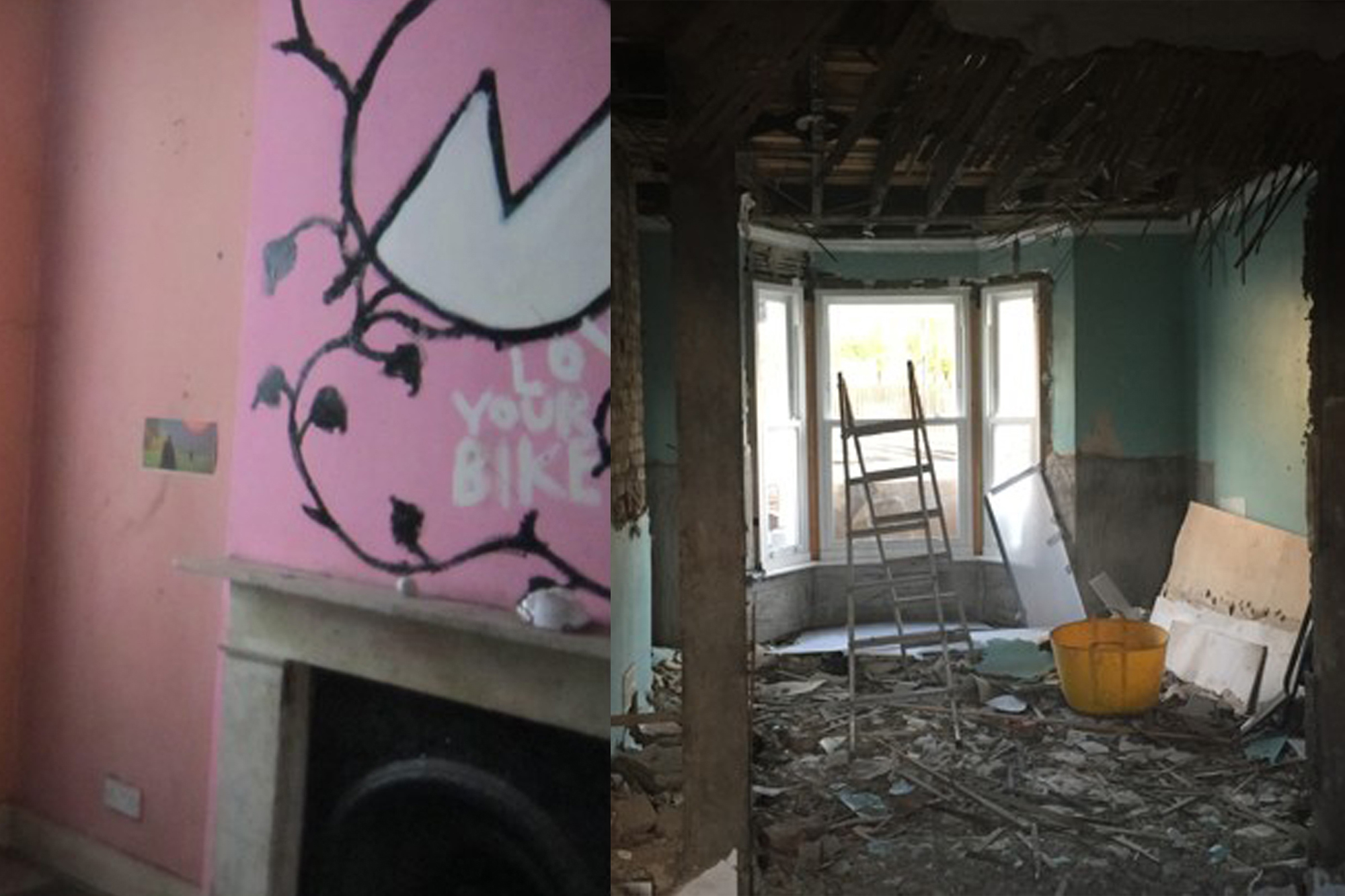
Thinking of decorating but can't see past Aunt May's floral choice that's been stuck to those walls since 1959? Removing wallpaper properly with soapy water, a steamer or chemical stripper is key for a clean slate that will be a dream to either repaint or update with a new wall covering.
33. Revive and refinish hardwood floors
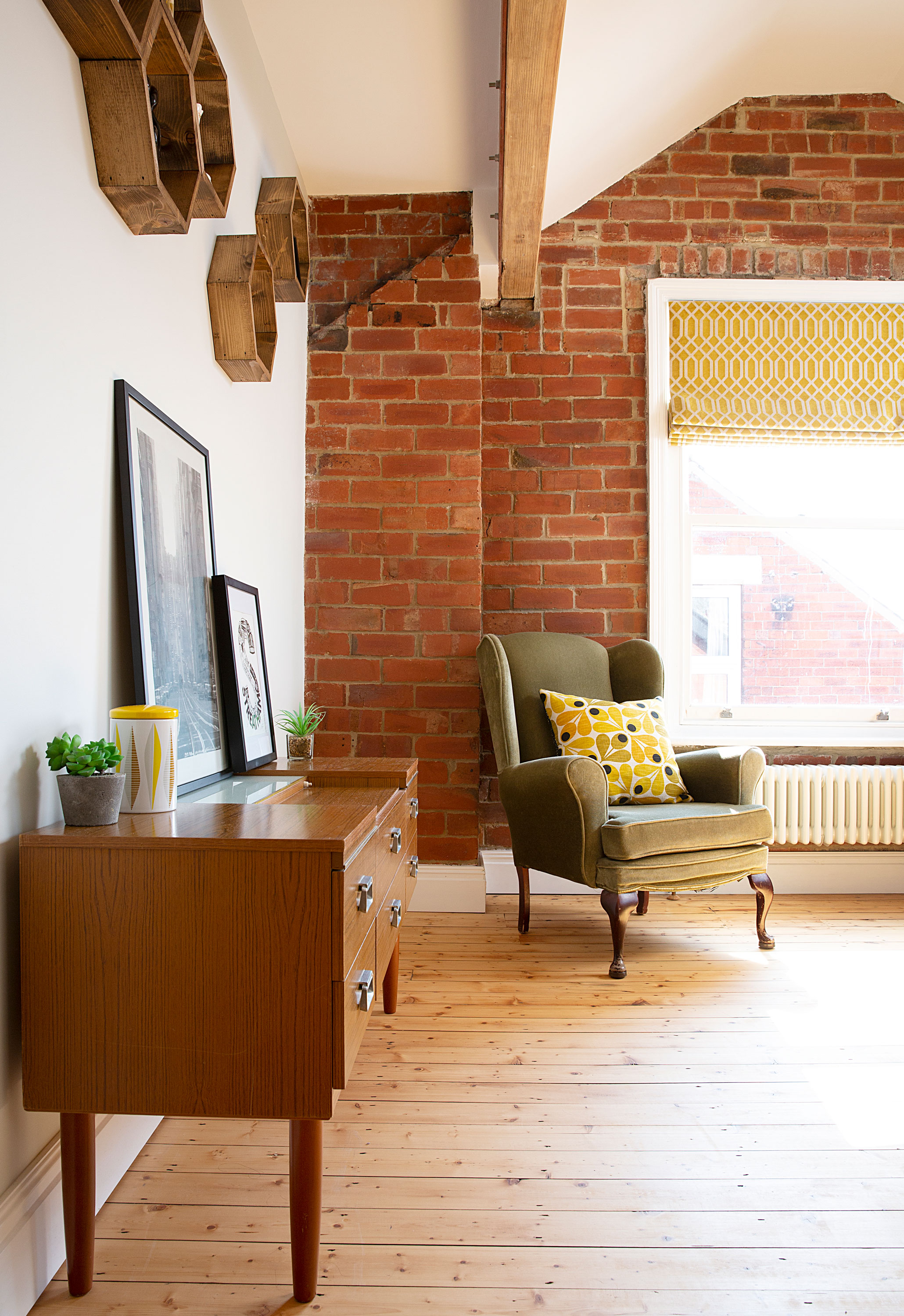
Refinishing wooden floors will not only smooth them and improve their overall appearance but, this home repairs job will increase their longevity too so it's wise to tend to them every couple of years. Jessica Fox, Marketing & Design at Flooring Superstore says, 'Sanding and refinishing your hard wood flooring can bring even the most tired-looking wooden floors back to life. By sanding down the top layer, you’re left with a new surface that can be re-finished to create a new-looking floor.
Unfinished wood flooring leaves vulnerability for liquid stains such as wine, cola, or sauce. A simple oiled finish prevents those unwanted stains. The oil itself acts as a protective barrier, so that liquids can’t be absorbed into the wood’s fibres.
The ability to sand and re-finish is a benefit of solid and engineered woods only. If your flooring has a lacquered finish applied, this can be replaced with an oil. However, you will need to sand down and fully remove the lacquer layers, before applying the oil. If you have laminate flooring you won’t be able to sand and re-finish, as the top layer is a printed image, and will therefore cause irreversible damage.
Oiling wood floors helps to enhance the overall appearance of its surface, as well as adding protection and nourishment. Clear maintenance oils are available in both matt and gloss finishes to restore the original look and feel of the flooring. For something a little different, a colored oil tint can completely transform the planks to create a whole new look.
'We recommend oiling wooden flooring every two years for domestic use, but you may want to do this sooner depending on how much the flooring is used.'
- DIY: How to clean hardwood floors properly.
34. Level a sloping garden

Home repairs can of course be taken outside. If you have an uneven lawn or very sloped garden which you'd like to sort out before calling in a garden designer to tend to the decor, you can do it by hand using deep top dressing in each depression, compacting the soil as you go. If you're levelling a sloping garden then retaining walls might be needed in which case a professional landscaper may be the best course of action.
35. Fix any holes in the wall
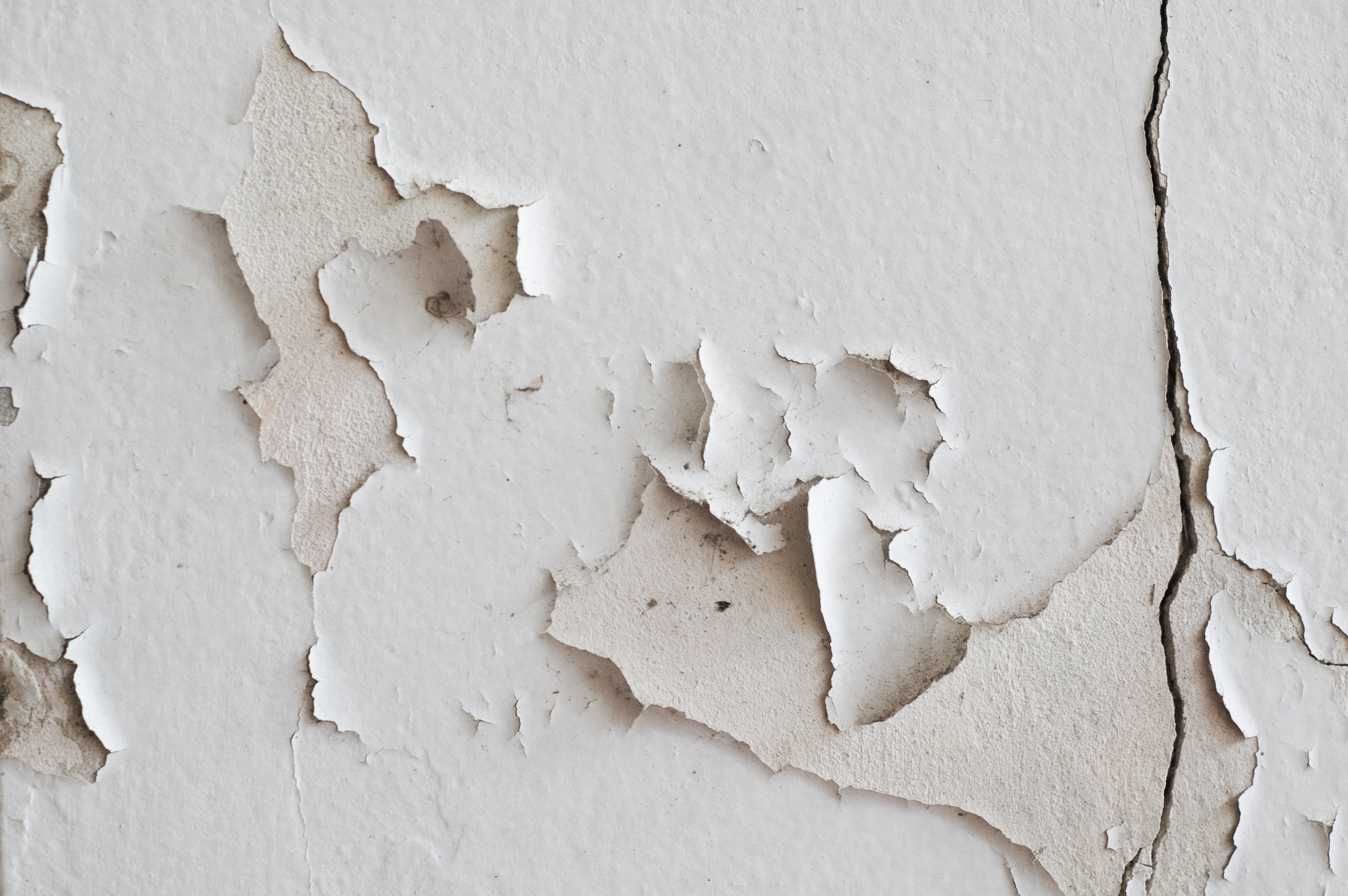
Whether it was a DIY project gone wrong or a gift from the old home owners, knowing how to fix a hole in the wall: be it plaster, drywall, concrete, is a must to ensure a smooth finish that's ready to decorate when you are!
36. Stop that leaky faucet

Drip drip drip will drive you mad. Our advice? Fix a leaky faucet asap. Start by identifying what faucet you have, switch off the water, take it apart to identify the issue and you'll either have to replace the washer, O ring or ceramic disc cartridge.
37. Repair guttering
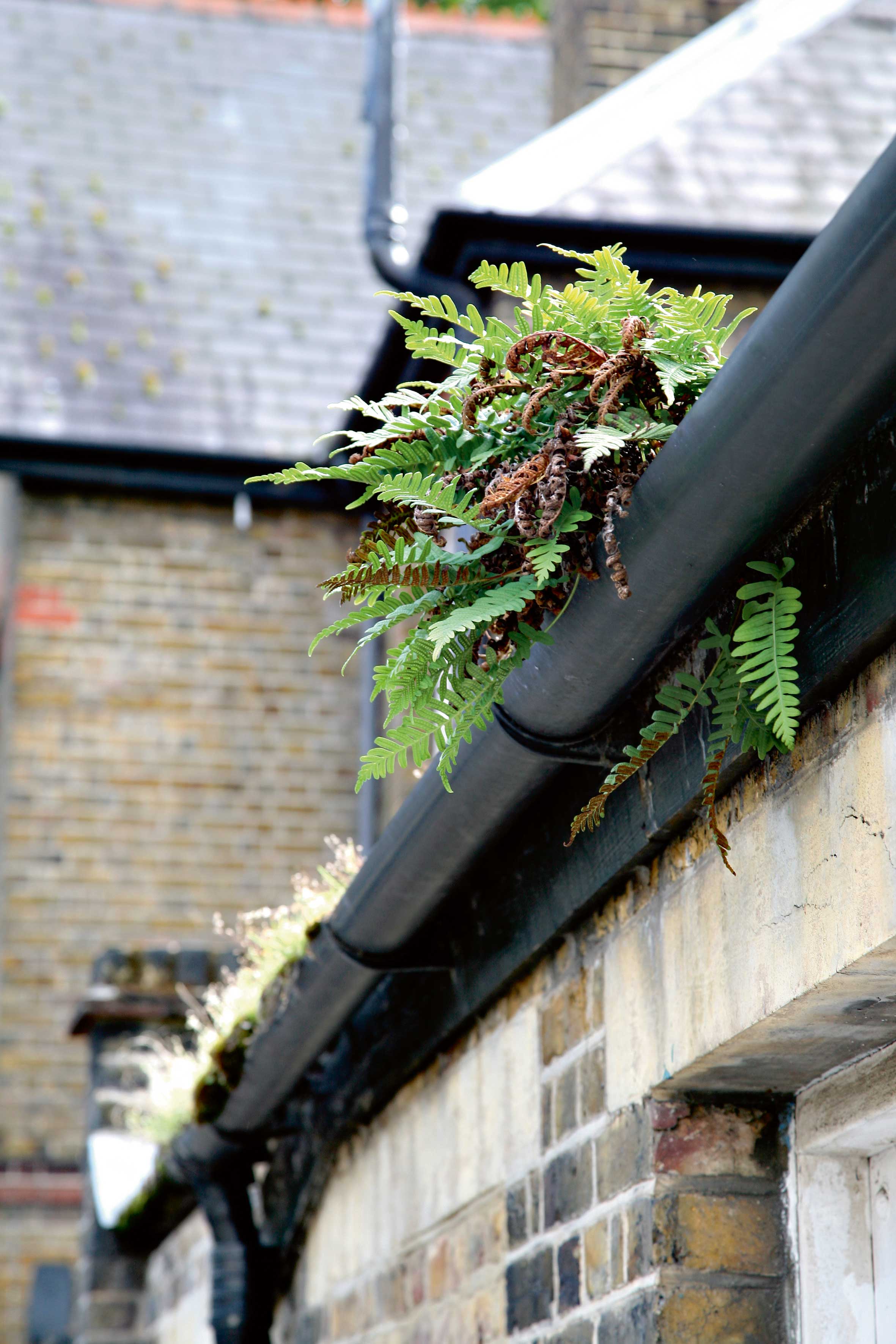
Clogged or damaged guttering can lead to a whole host of issues if not sorted out promptly. And, you'll quickly know this is a problem if you identify damp patches on interior walls, puddles of water around the guttering and actually pieces of your guttering on the ground... It could be that the fall isn't right, that there is a crack or that it's not well connected to the drainage systems (often the case with Victorian builds) but it's essential to know what's what and to repair guttering using the best method for the material and design.
38. Regrout tiling

Grubby grout is not a good look and regrouting tiles will keep yours in better condition also. Old grouting may need removing first (easily done with a grout rake and, then you simply need to mix up your grout, reapply it and clean up your tiles when you're done.
39. Fix bad smells
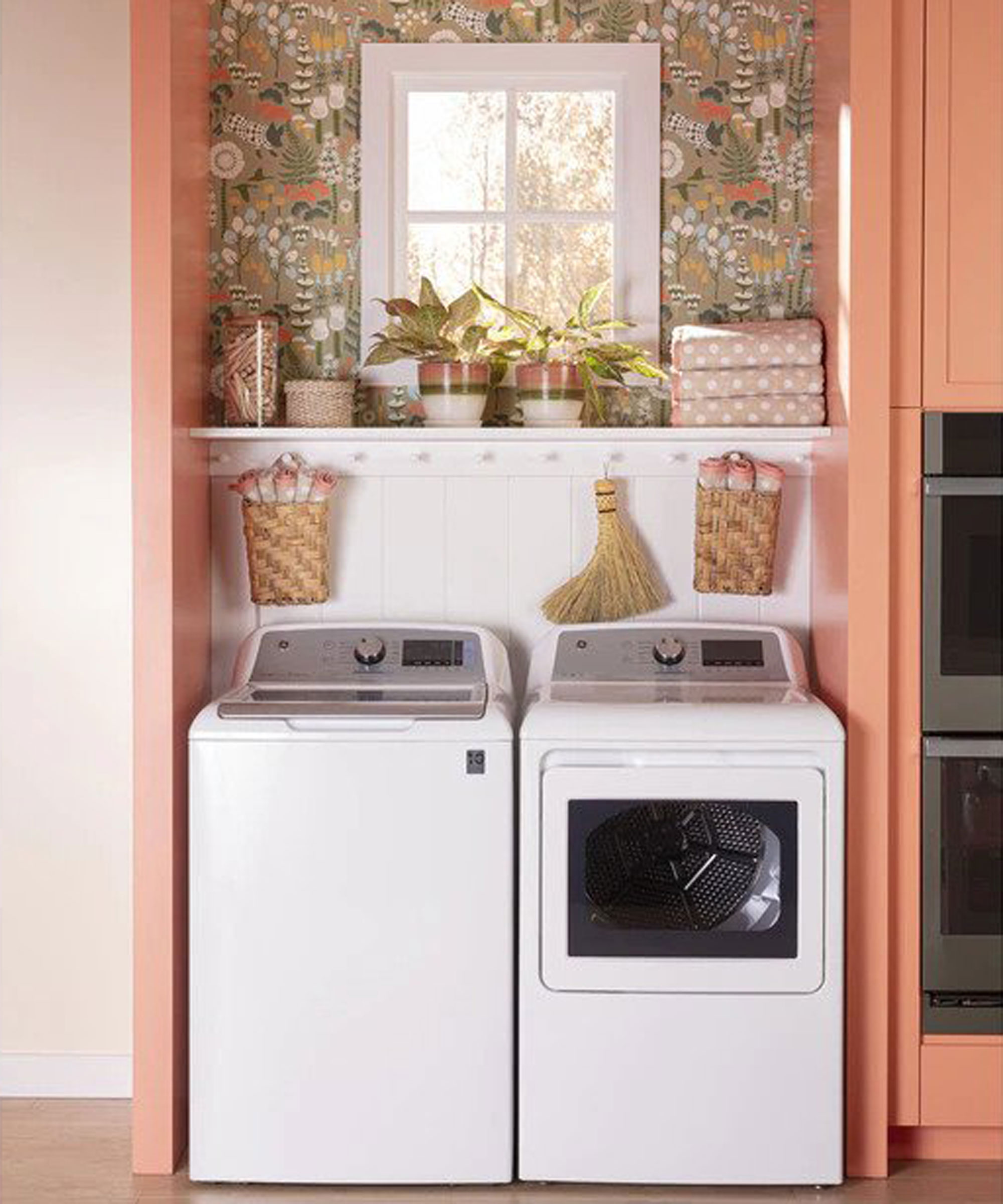
Getting a whiff in a few different rooms around the house? It could be an old gym bag but if it's a smelly dishwasher or washing machine, that's an easy home repair job. Clean a washing machine and freshen up your big appliances using white vinegar on an empty hot wash/cycle. Following that with baking soda and a little lemon for a natural disinfecting action that will leave a fresh scent too.
40. Change that flickering light bulb
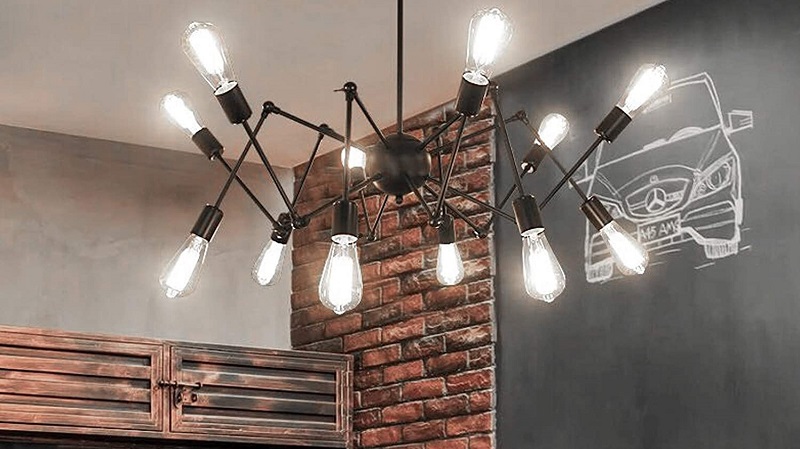
Flickering light? Changing a light bulb is a job that you can't get away with not knowing. From regular light bulbs to spots, start by switching off the mains, identifying the lightbulb type and wattage to ensure you pick up the right replacement.
What should I fix in my house first?
Of course, sometimes we don't have the luxury of putting off the work, as when a plumbing emergency strikes it needs immediate attention. So it pays to know how to stop a disaster in its tracks before it causes too much damage. Otherwise, it's worth starting with anything that you notice on a daily basis and that is probably impacting your day-to-day more than you think... And, that could end up costing you lots of cash if you leave it too long.
Goodman weighs in, 'This answer does depend on the property you’ve purchased and how much work is required. However, there is a consensus on what needs to be done first. If the property has visible cracks on the exterior, it’s important to get them assessed by a structural engineer. This needs to be done first to ensure that the property is safe to work on.'
'Next you need to check that the roof is sound and not leaking, if any windows or missing or broken they need fixing. If you can’t replace them immediately, board it up to keep the property safe. Once everything is open, you’ll also identify any fabric matters such as damp or rot issues. When the cause has been rectified and repaired, you can ensure it should not re-appear.'
Duck brand experts say, 'To prepare for the cold and limit costly heating bills, it is important to check that there are no drafts or air leaks coming from windows and doors around the home. For windows, installing weatherstrip seals in the windows’ gaps can help to block cold air drafts. For an additional layer of insulation on windows, use a shrink film insulation kit that covers windows completely for easy installation for the colder months and removal during the warmer months. For door drafts, installing weatherstripping in gaps around the door frame helps stop the cold air from entering your home. Duck® Brand has a variety of door bottoms to choose from for insulating the gap between the door and the floor.'
Whether it's a loose floorboard, clogged shower drain or flickering light, we're going to help you fix it, fast and without having to spend on a plumber, electrician or high-in-demand neighbor...
Jobs = done!
- Camille Dubuis-WelchFormer Deputy Editor